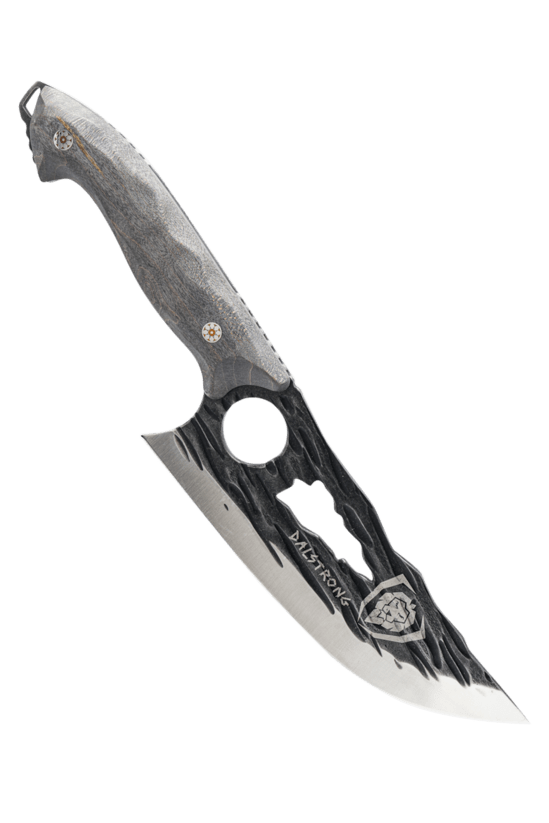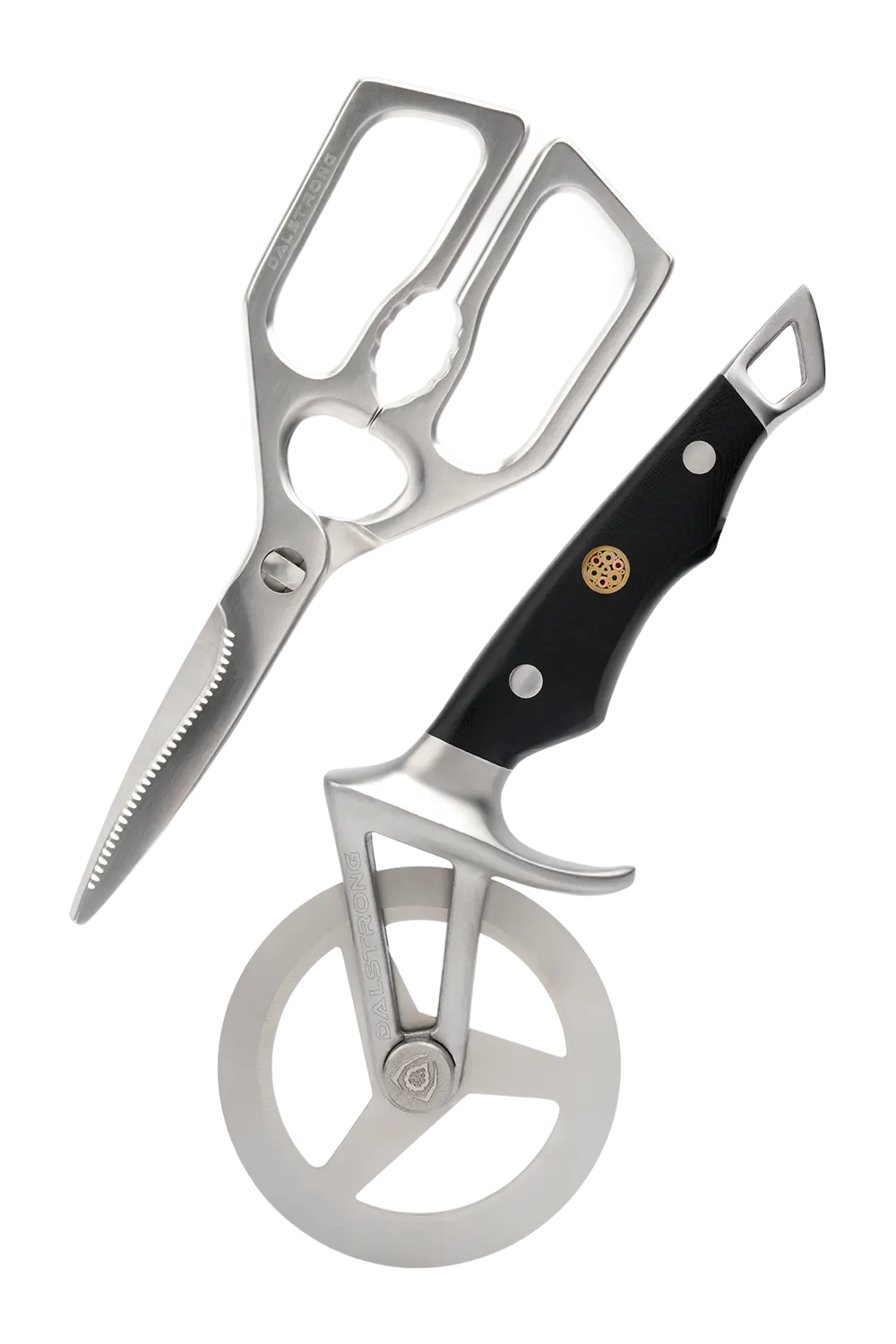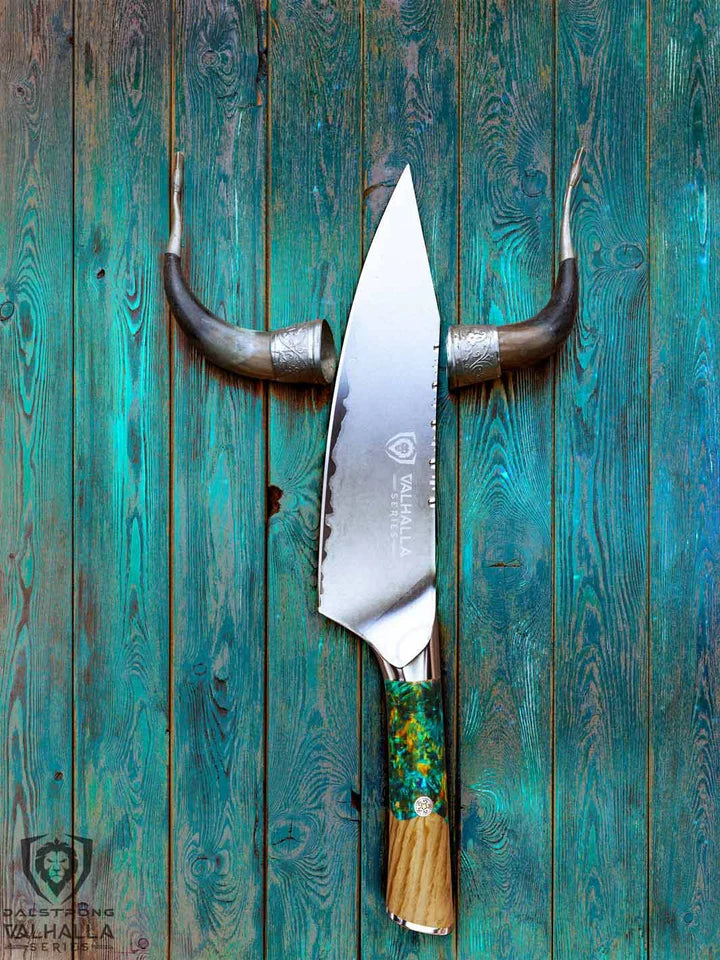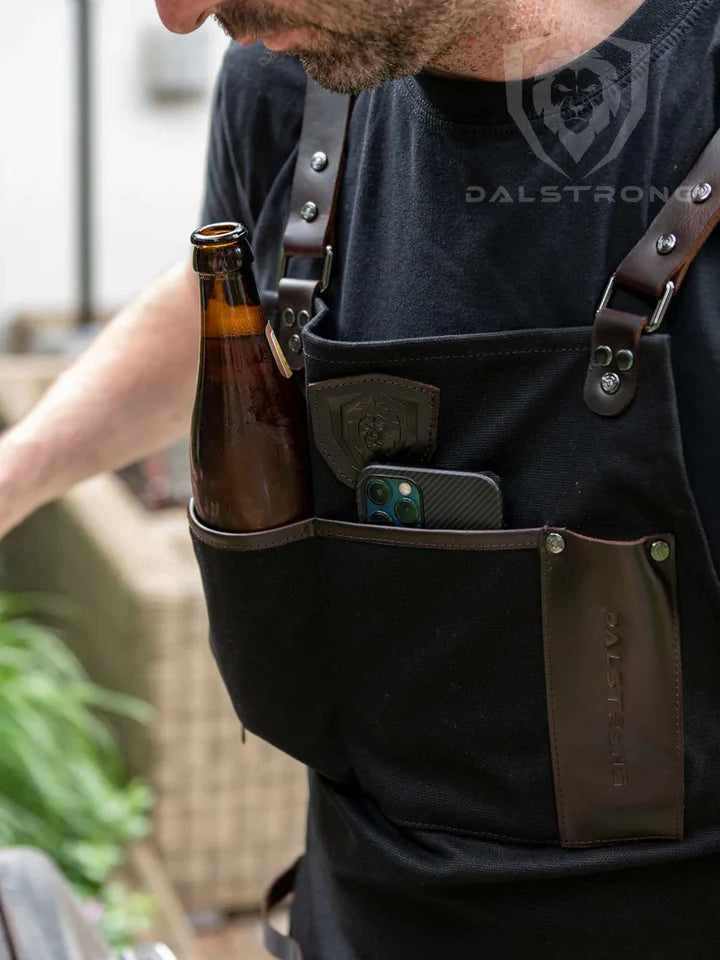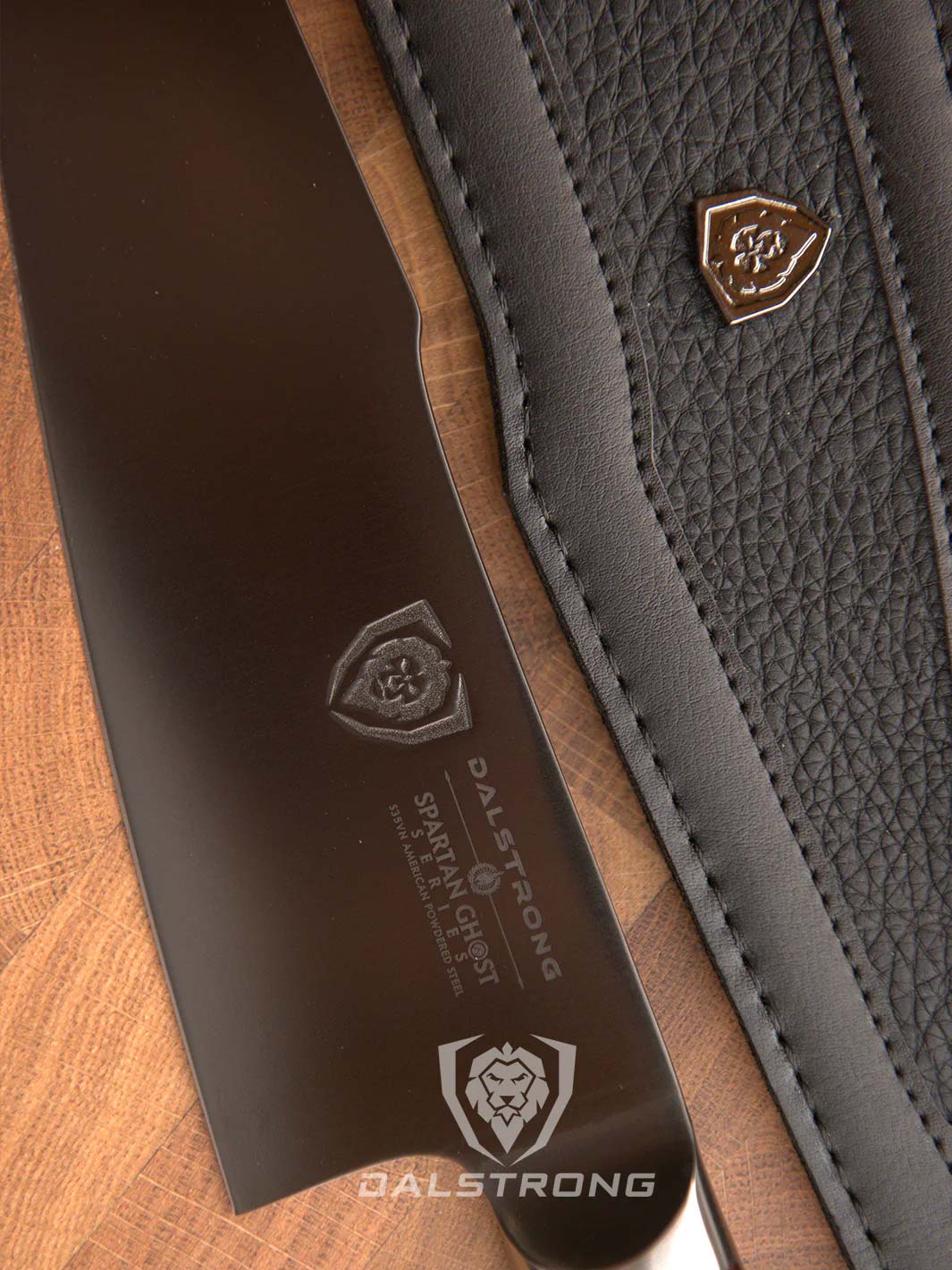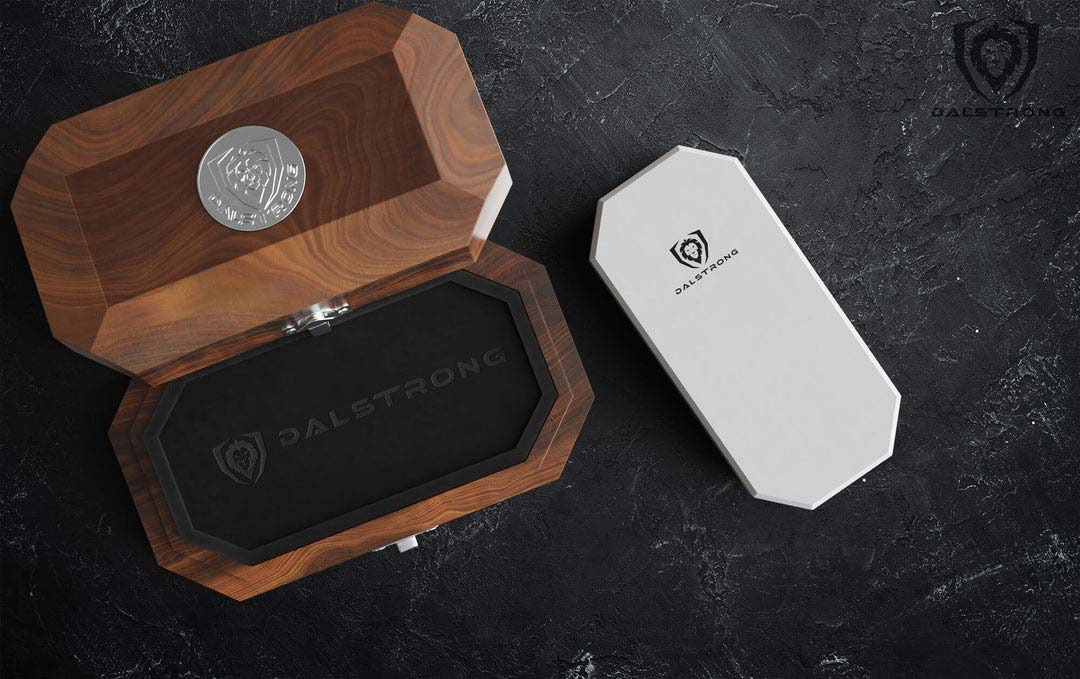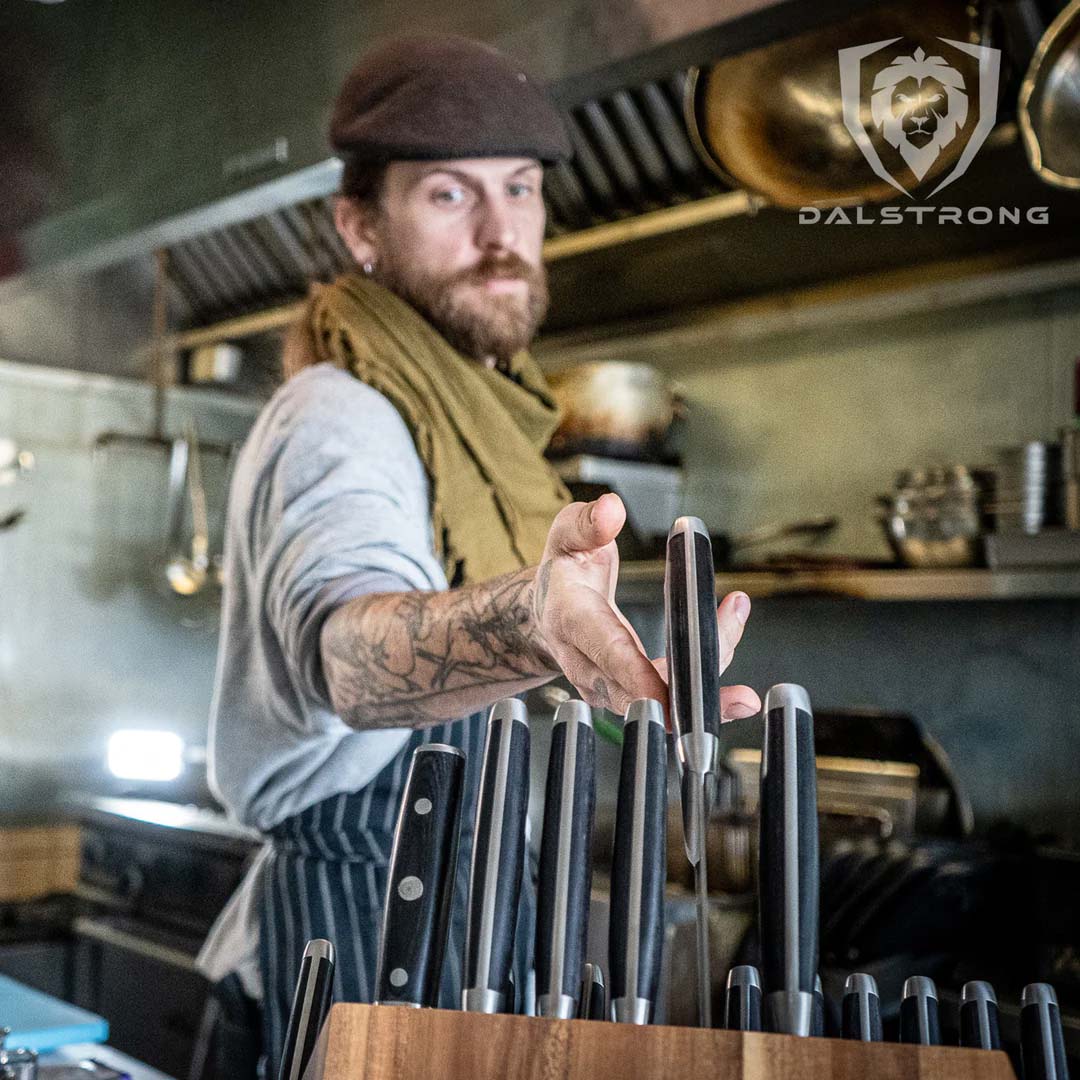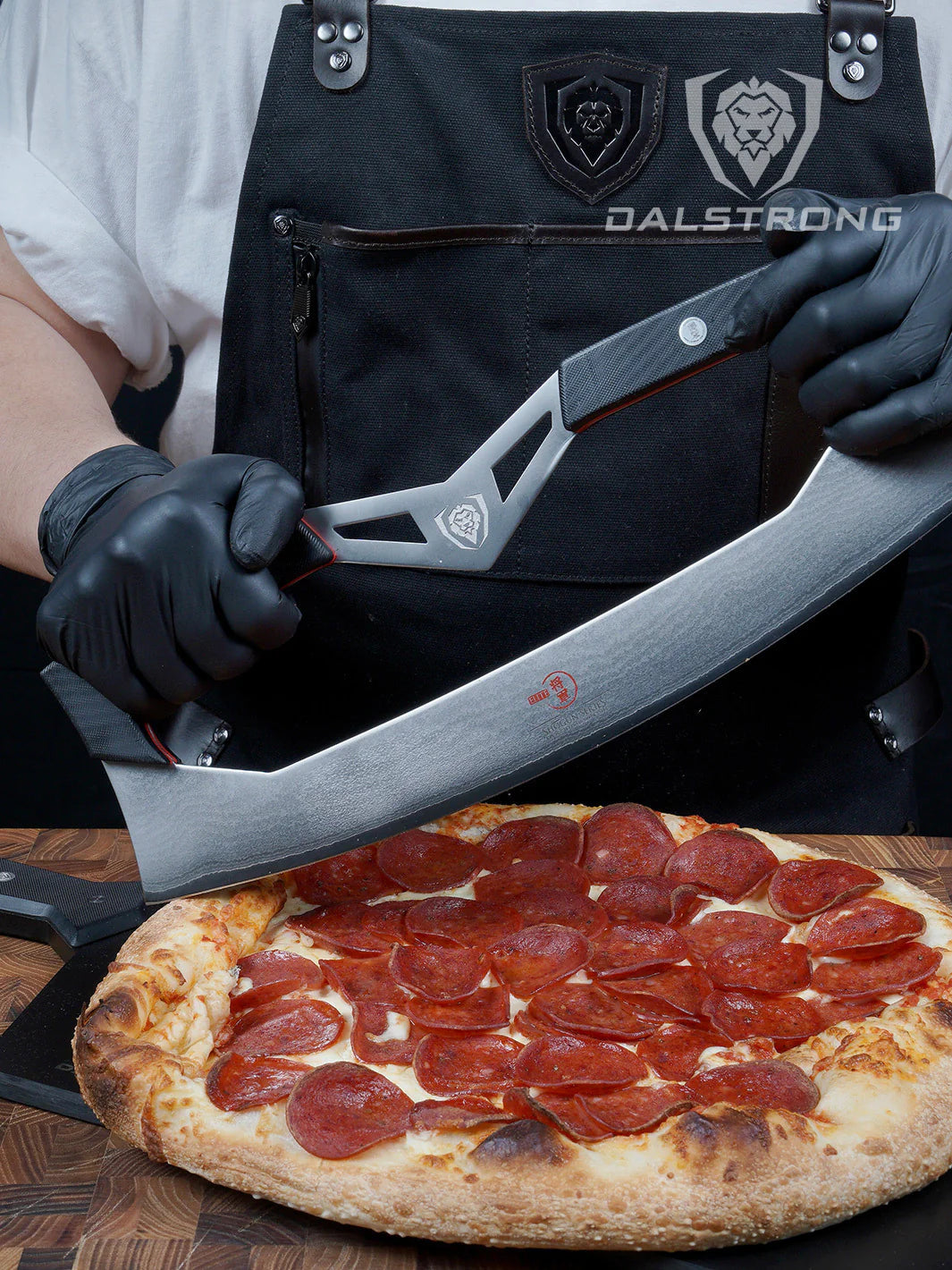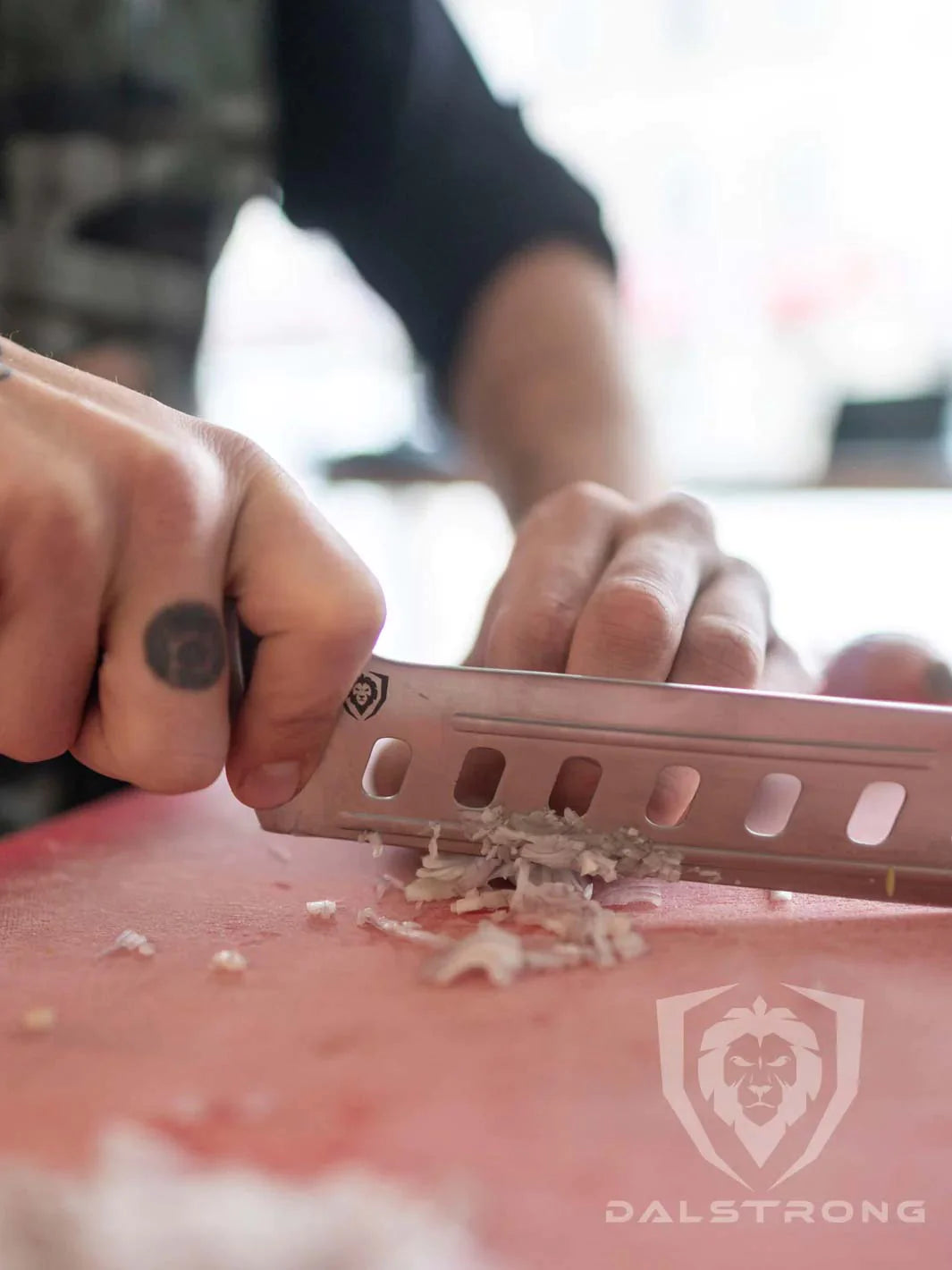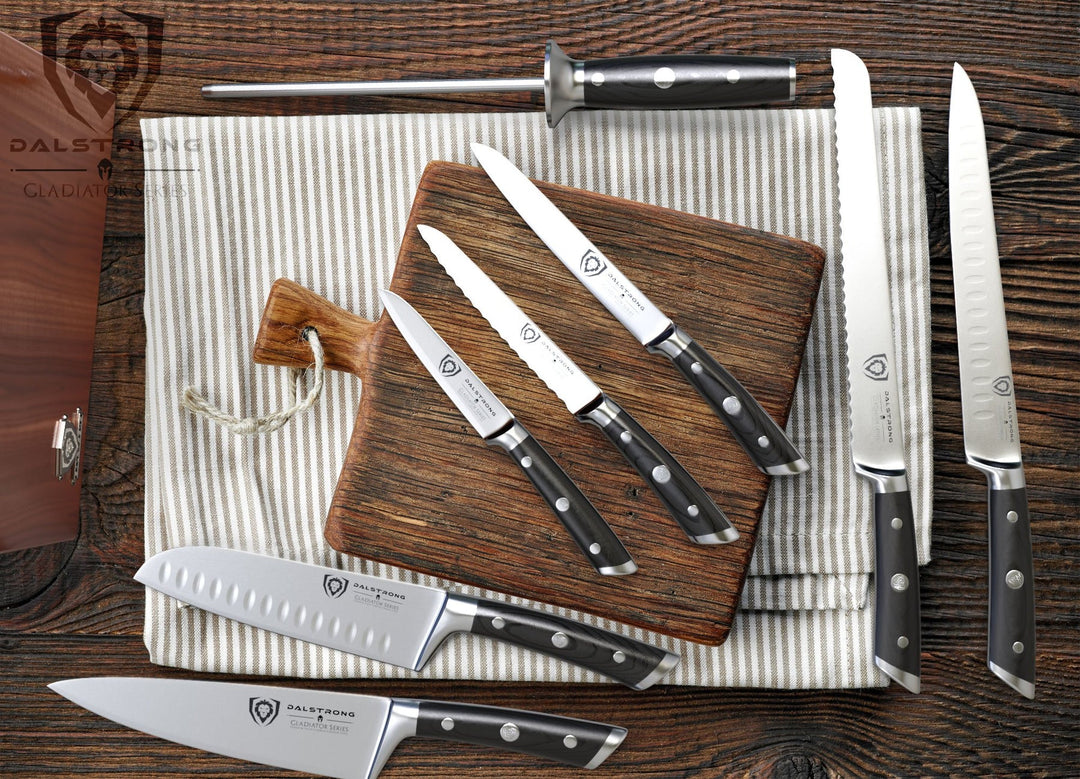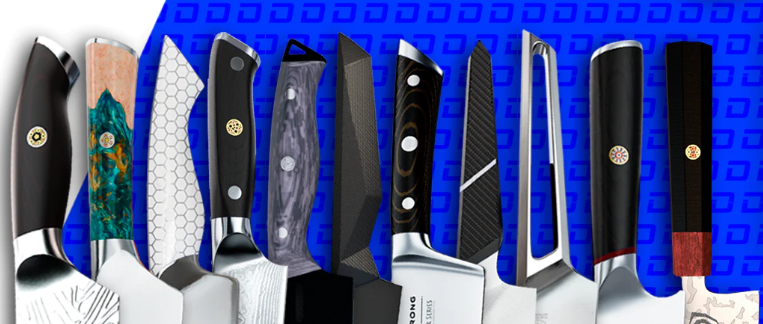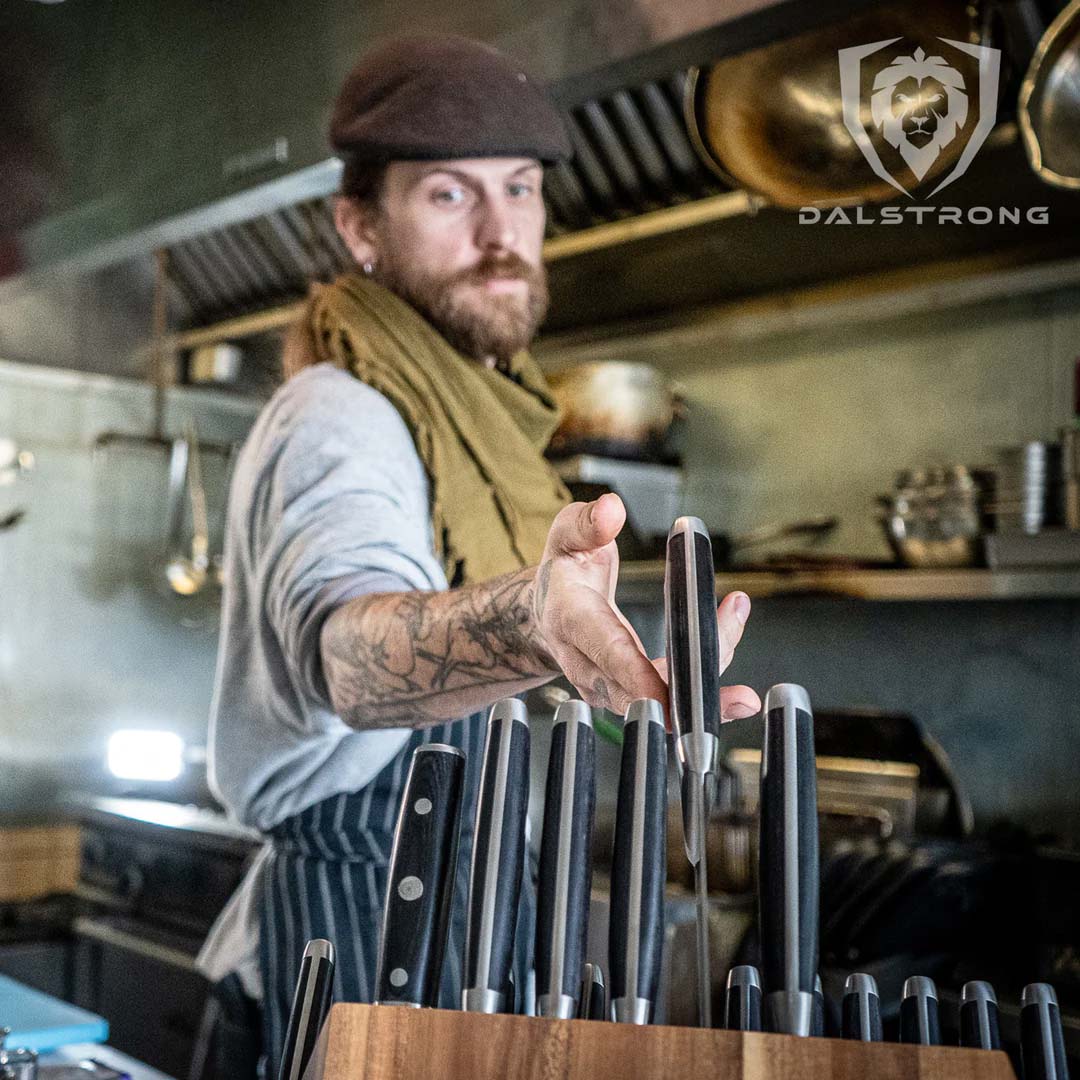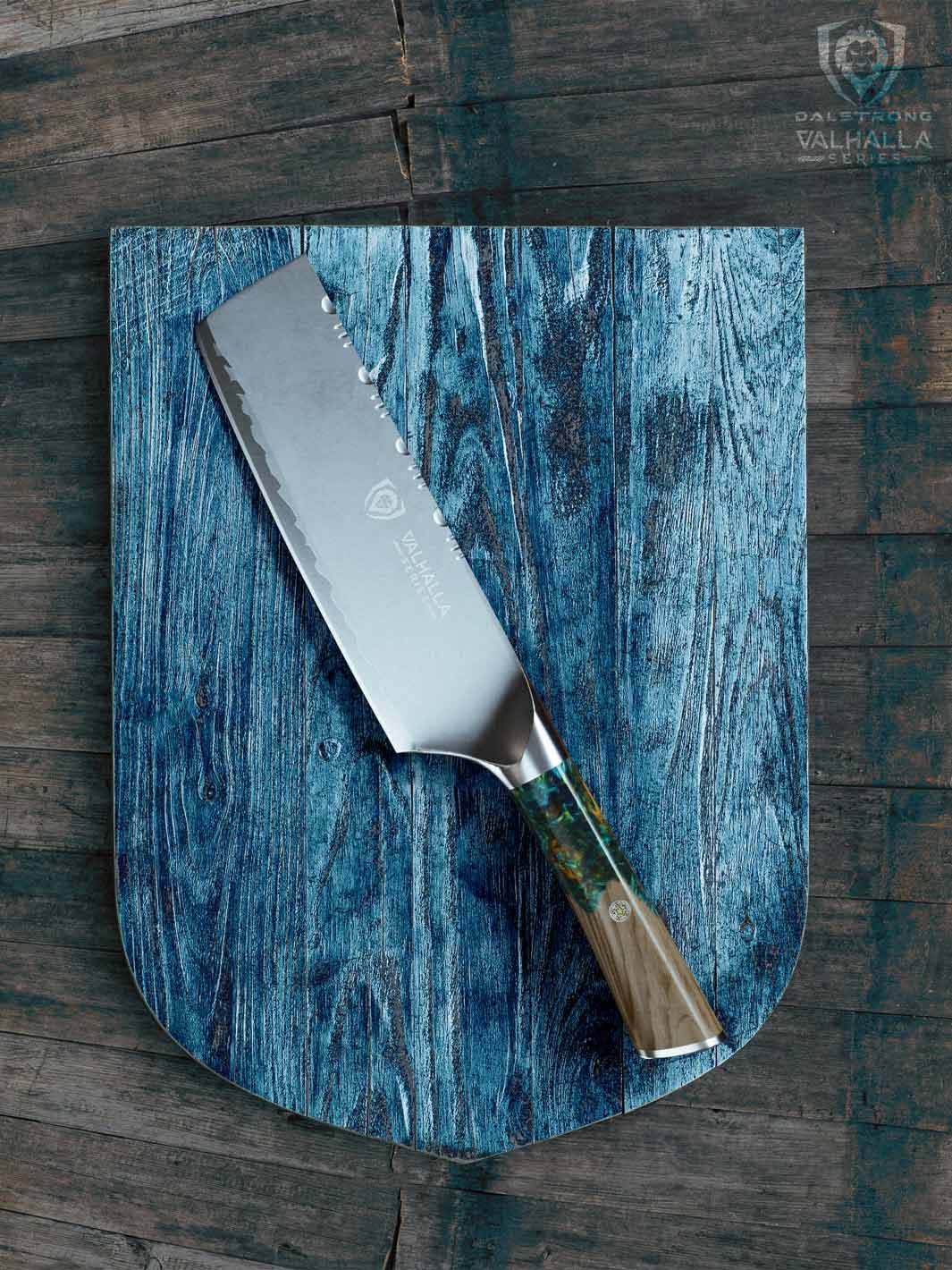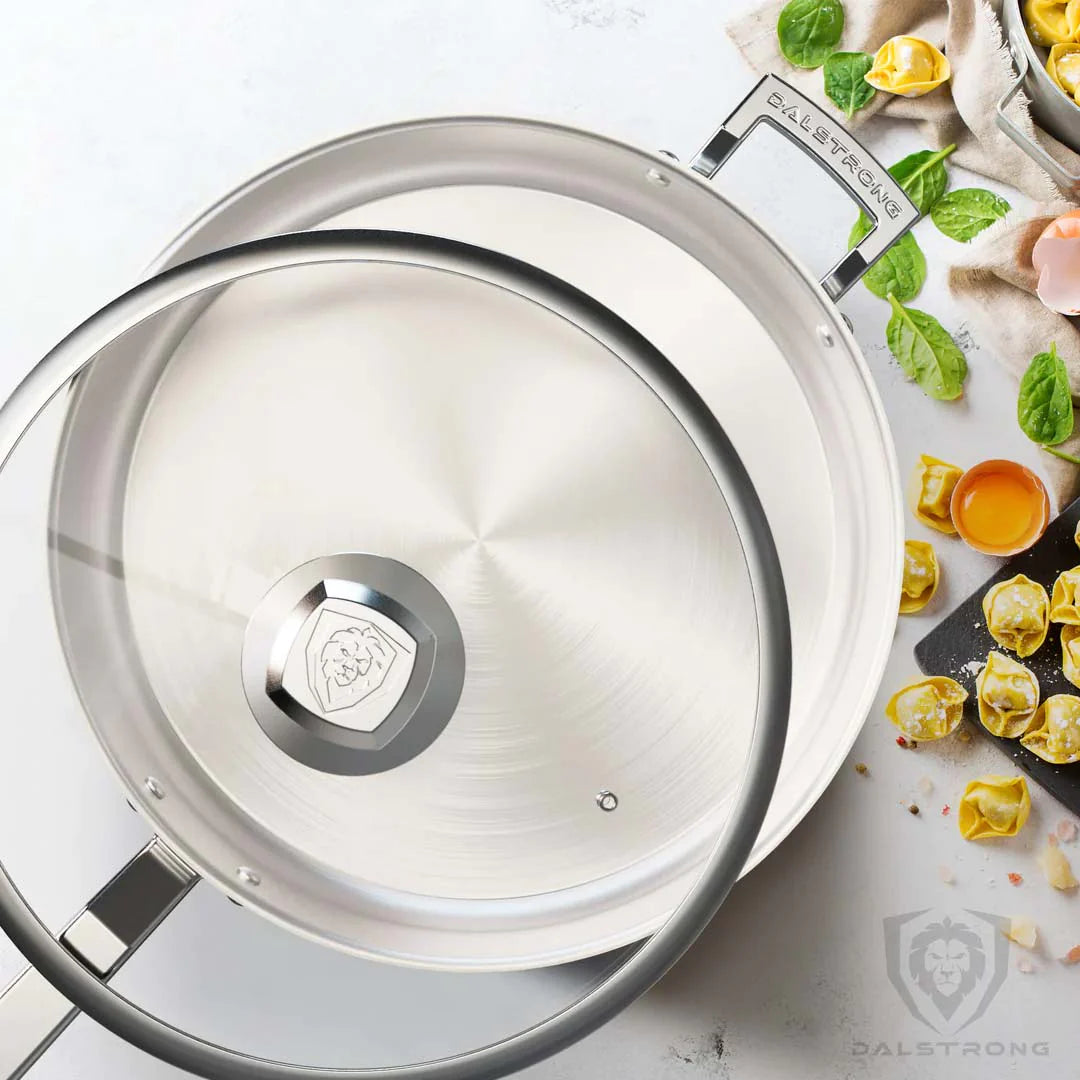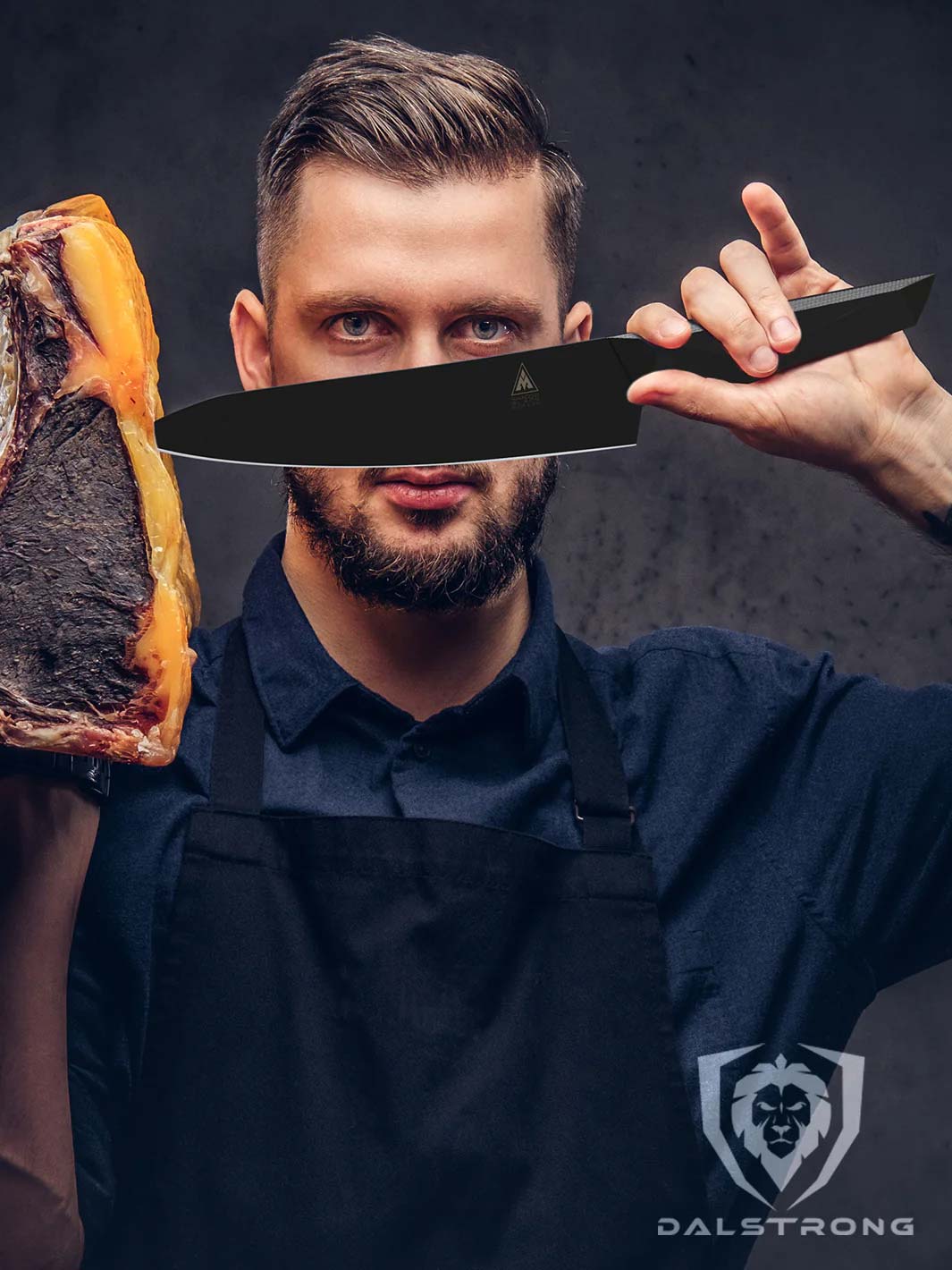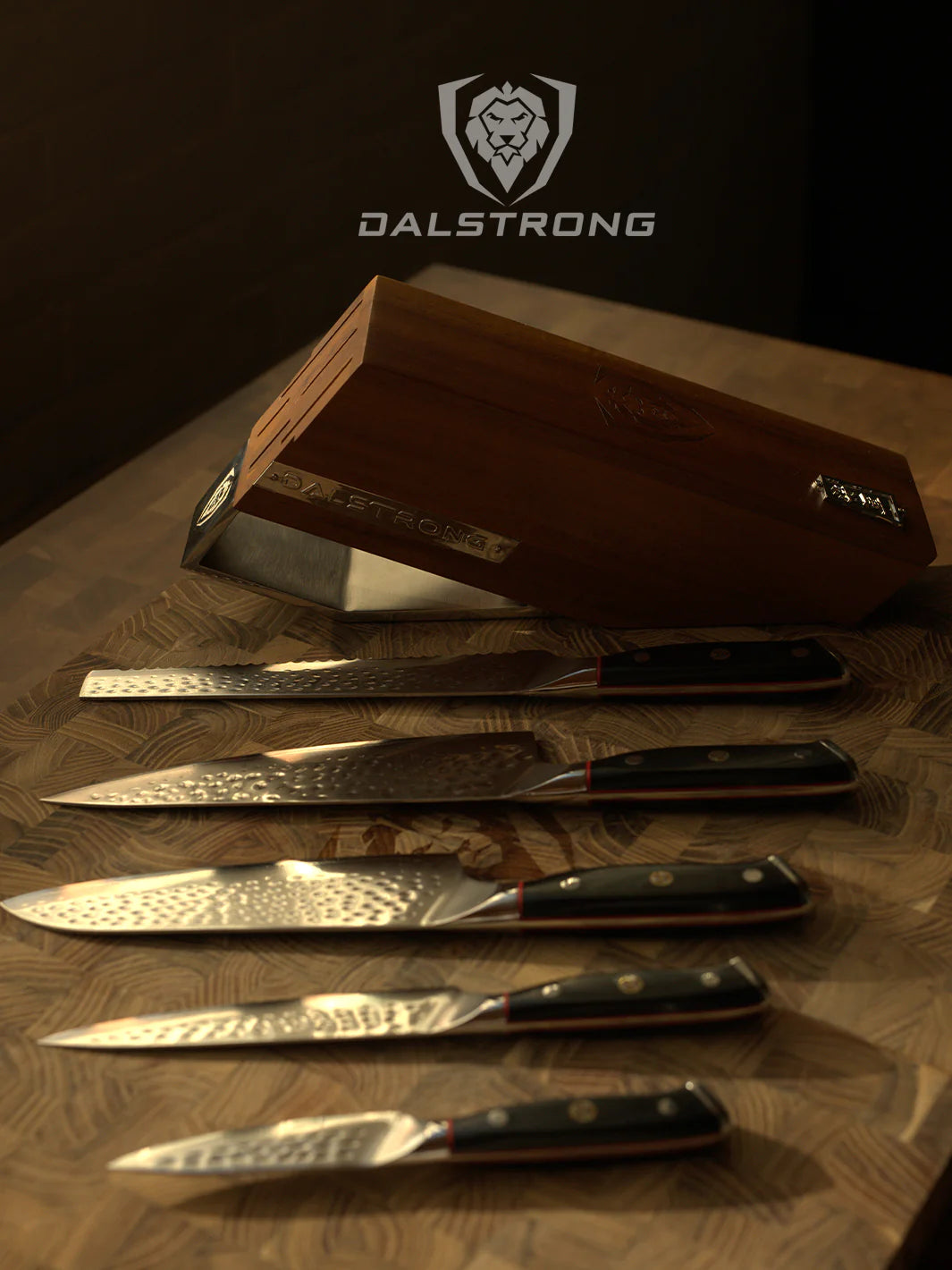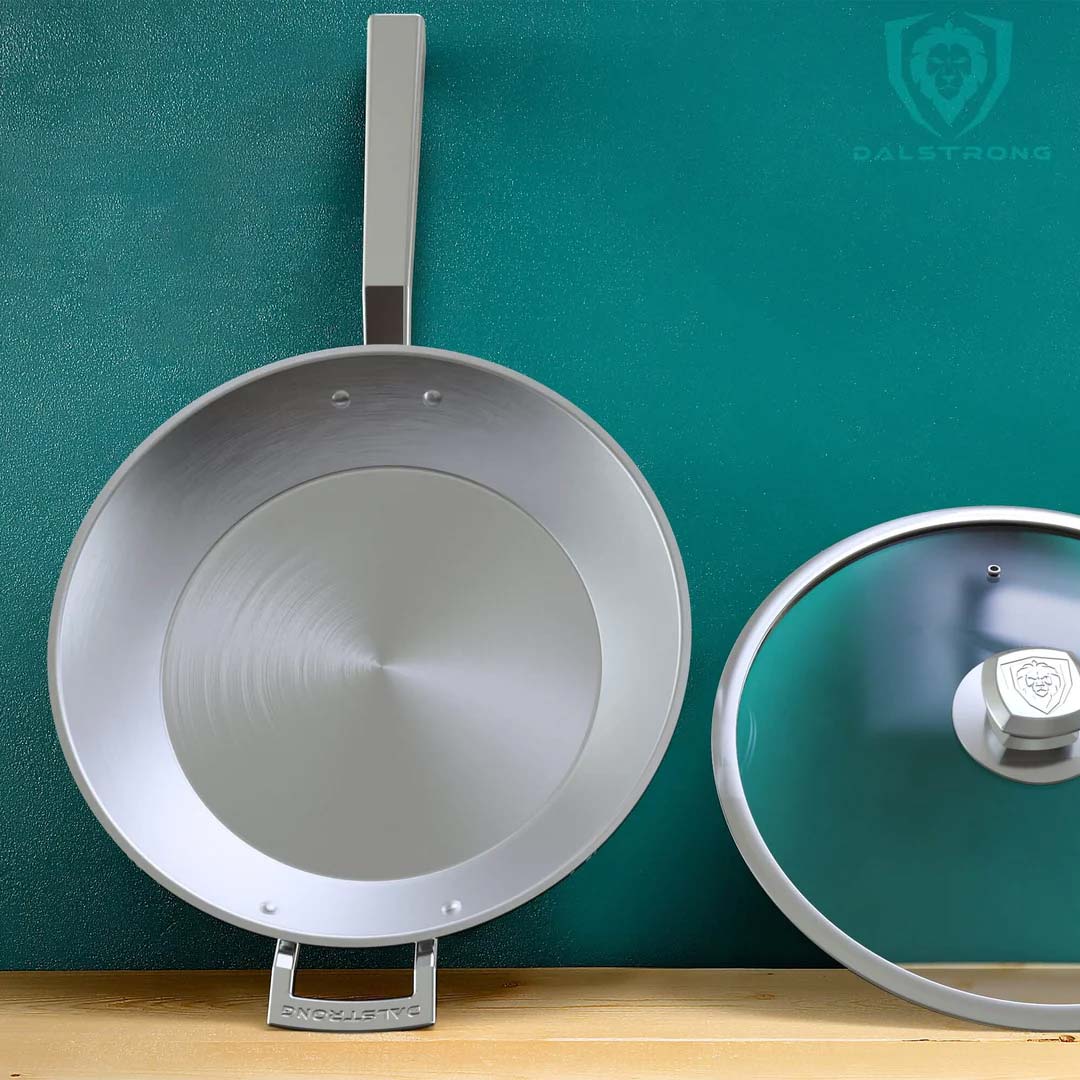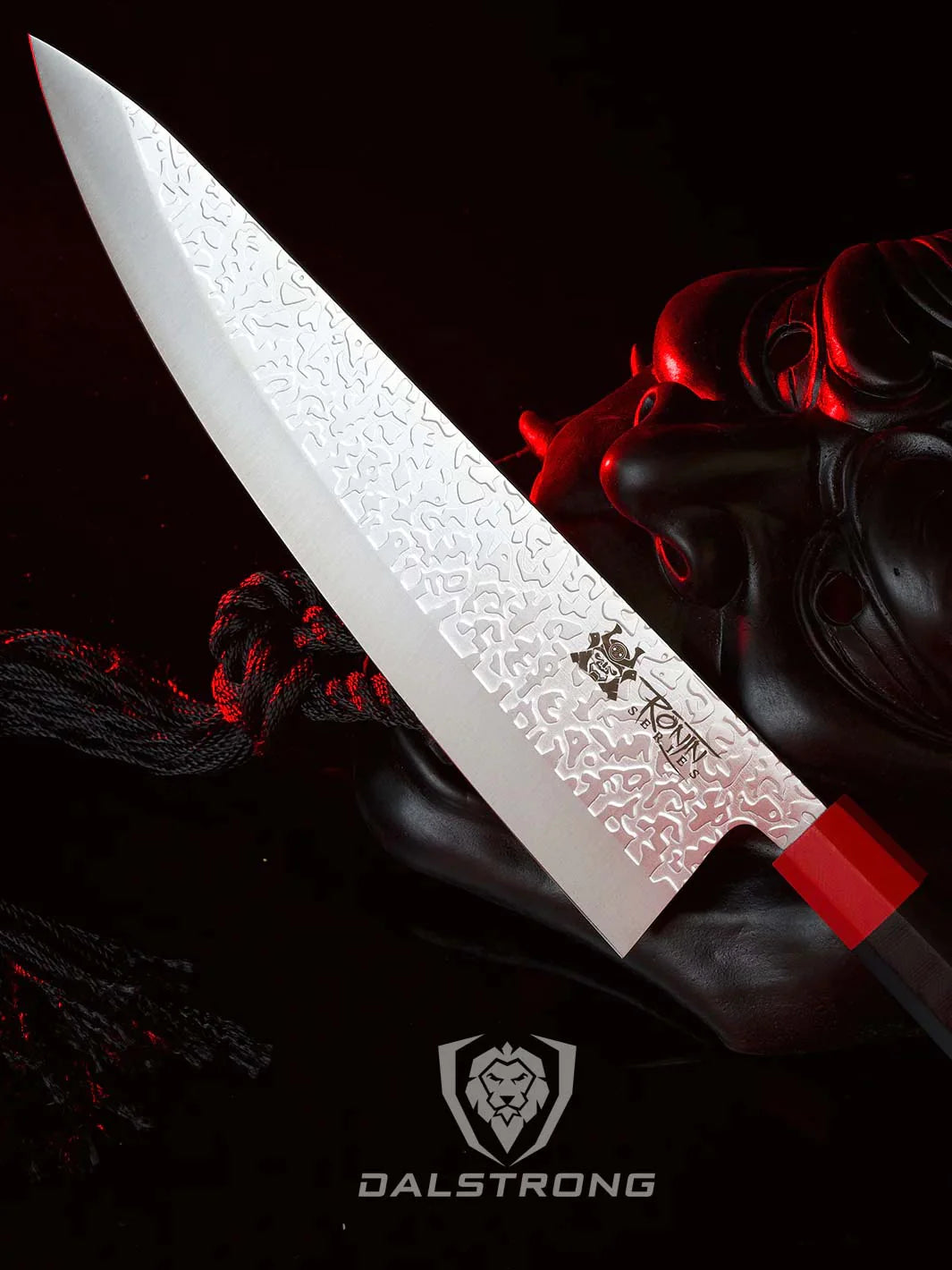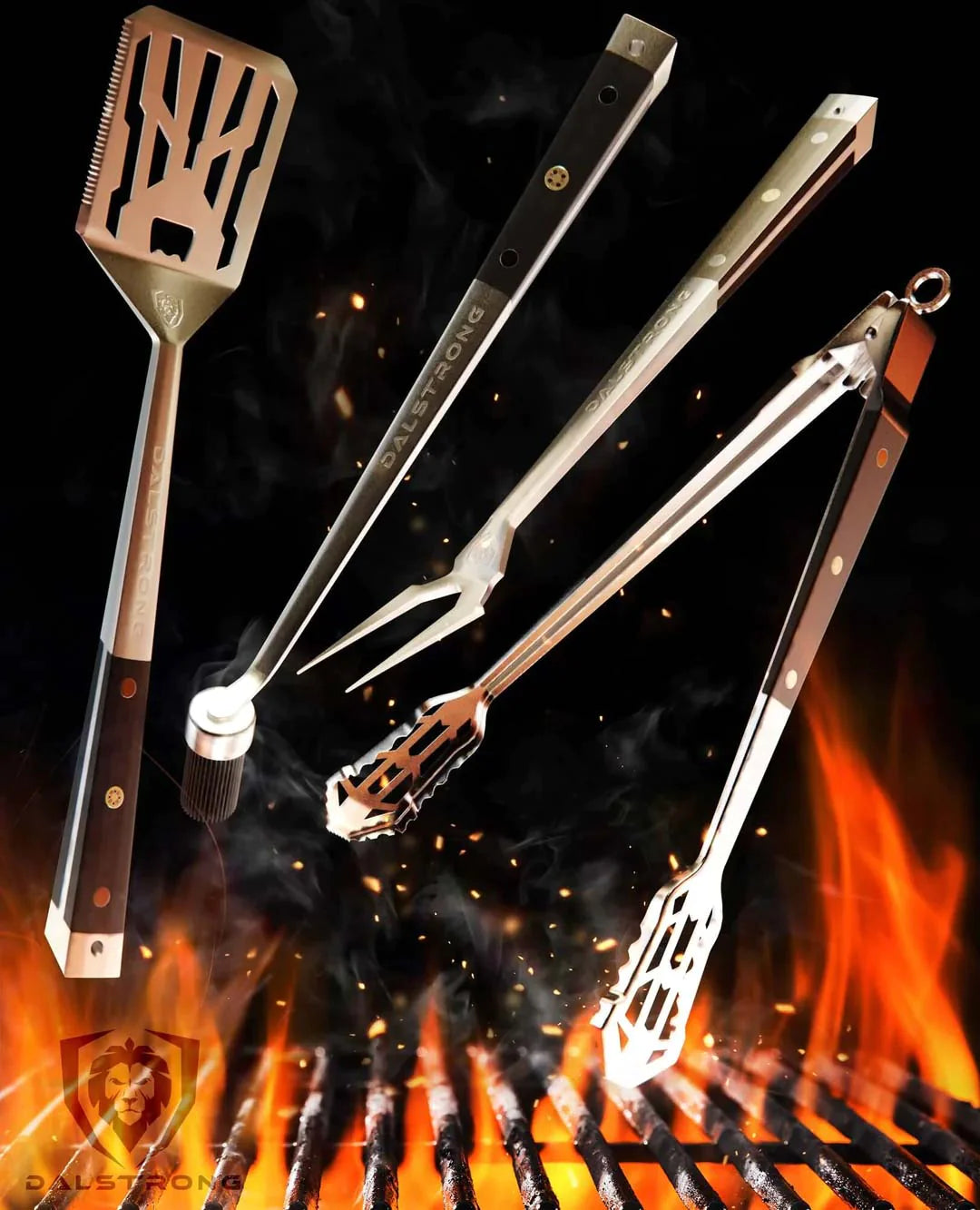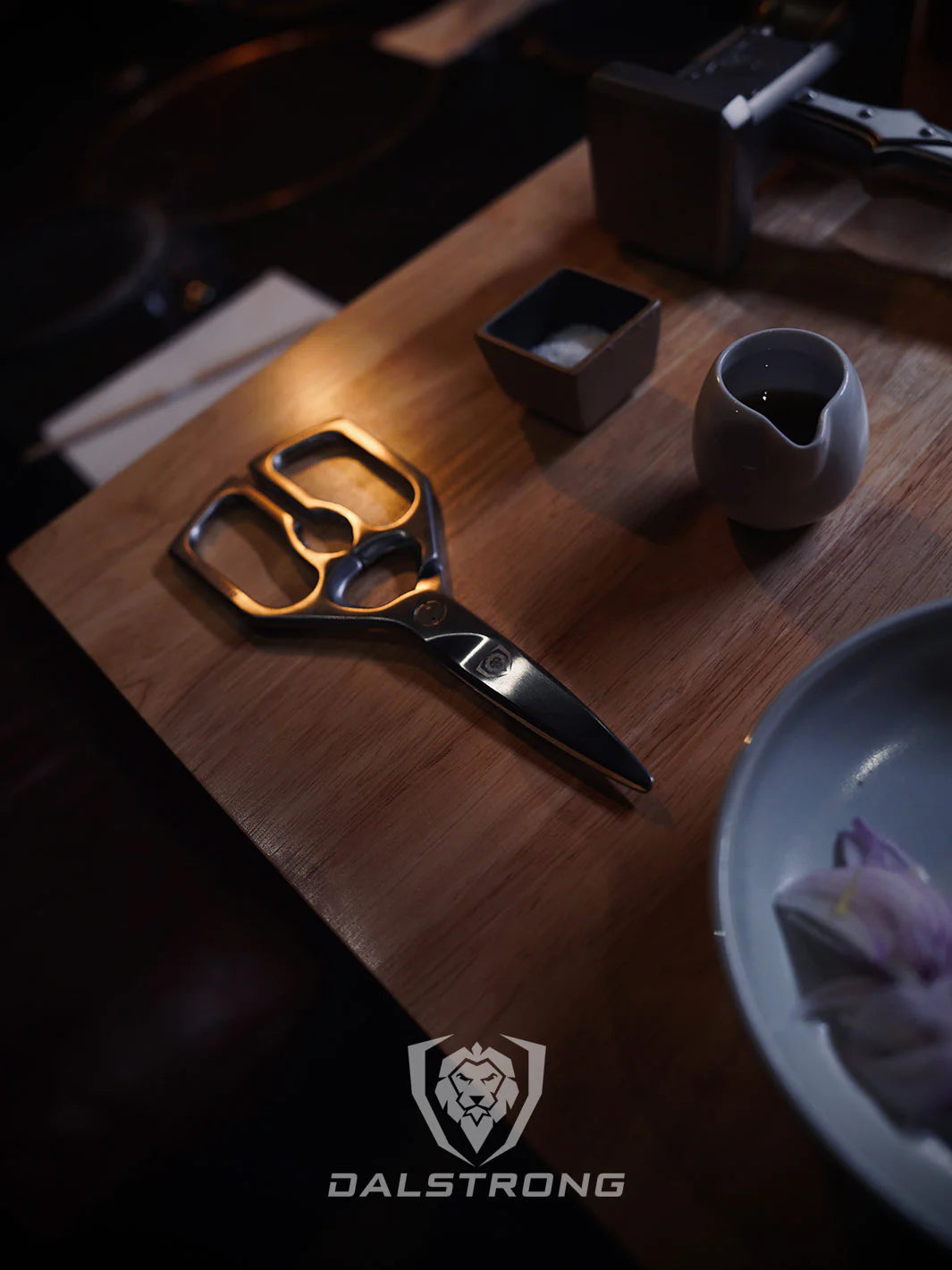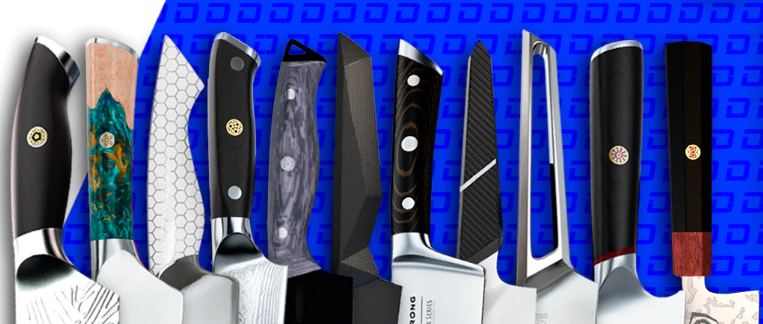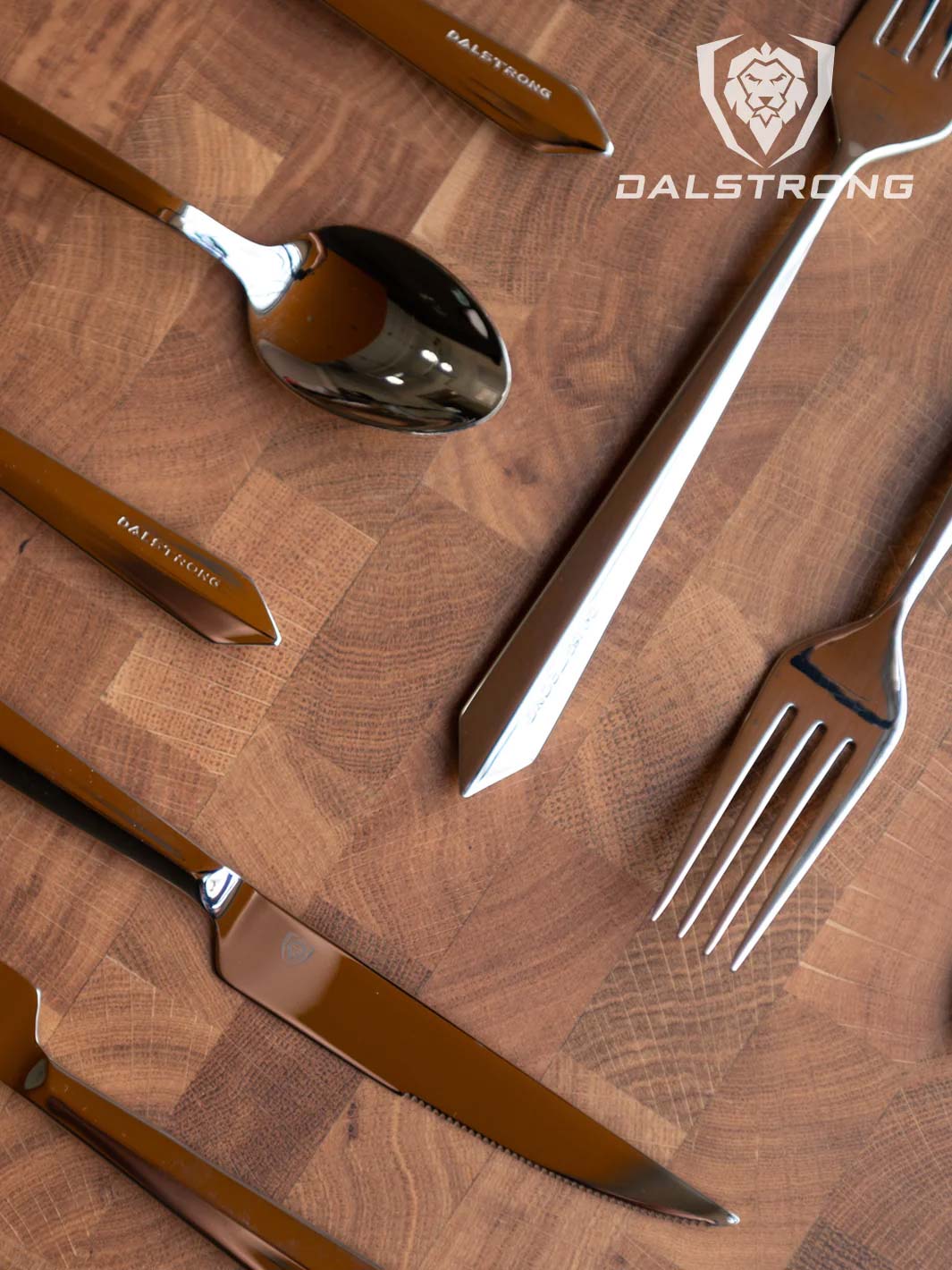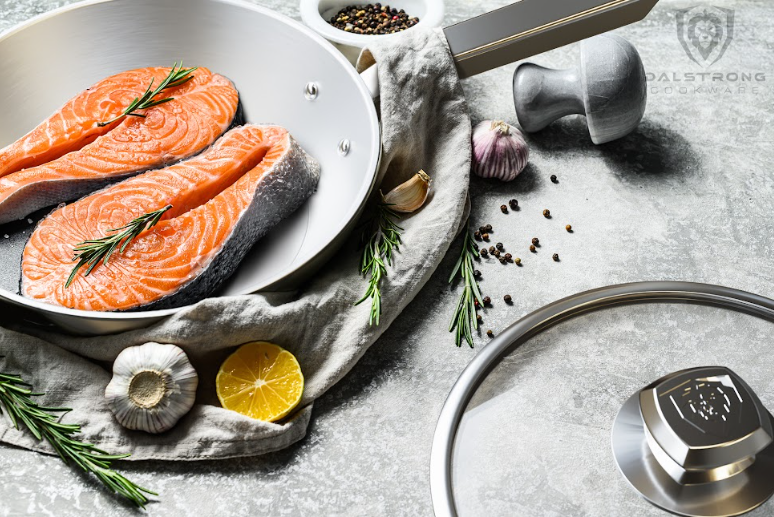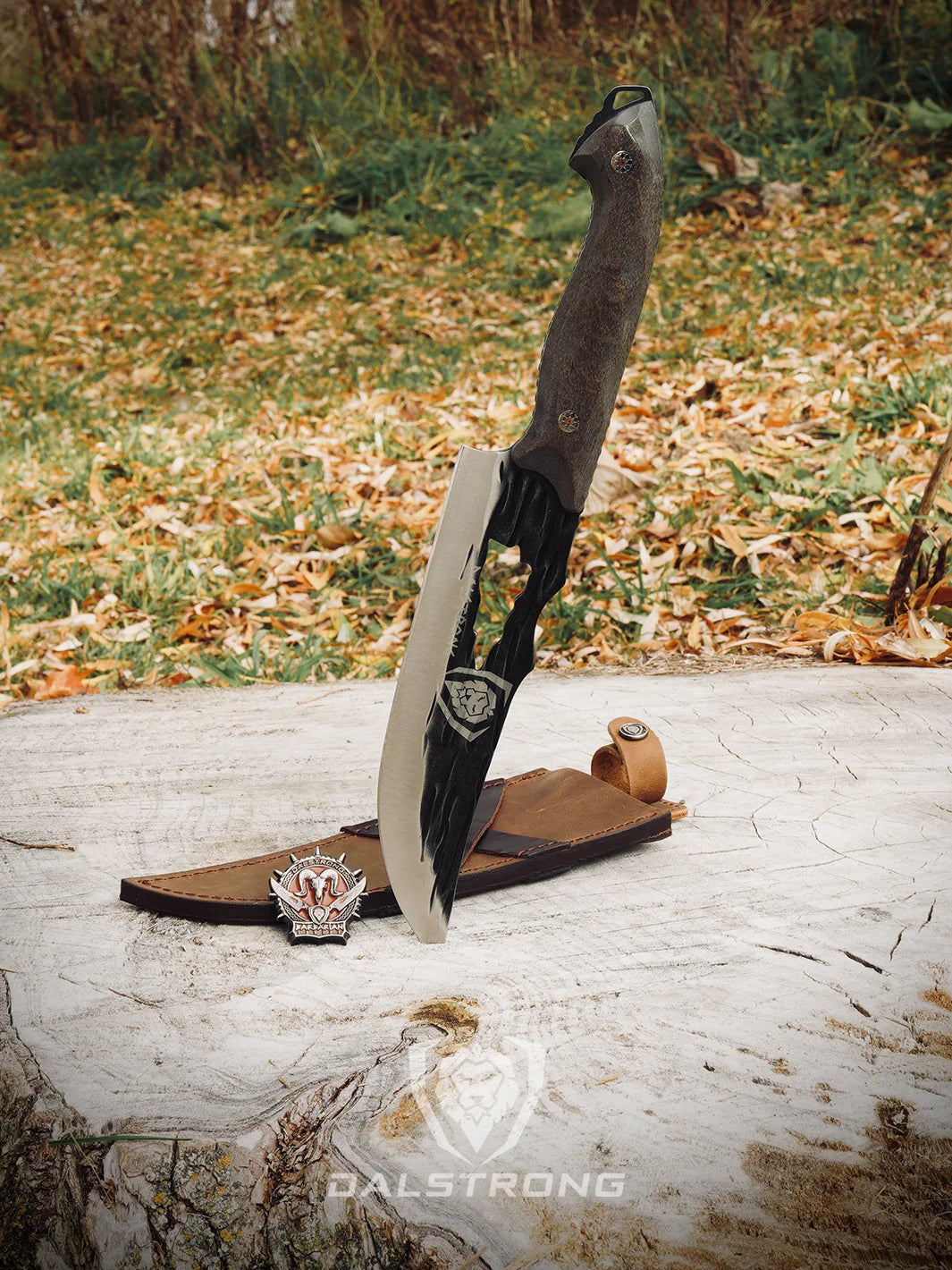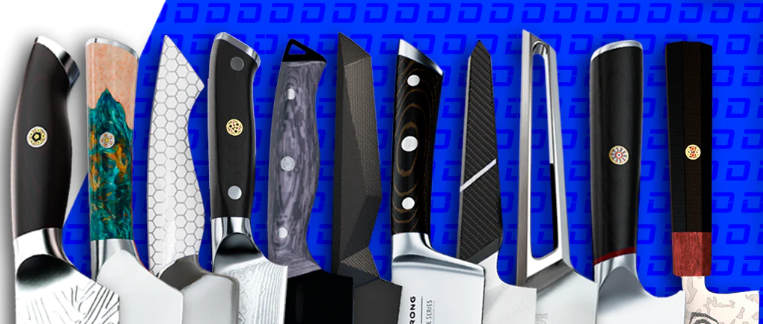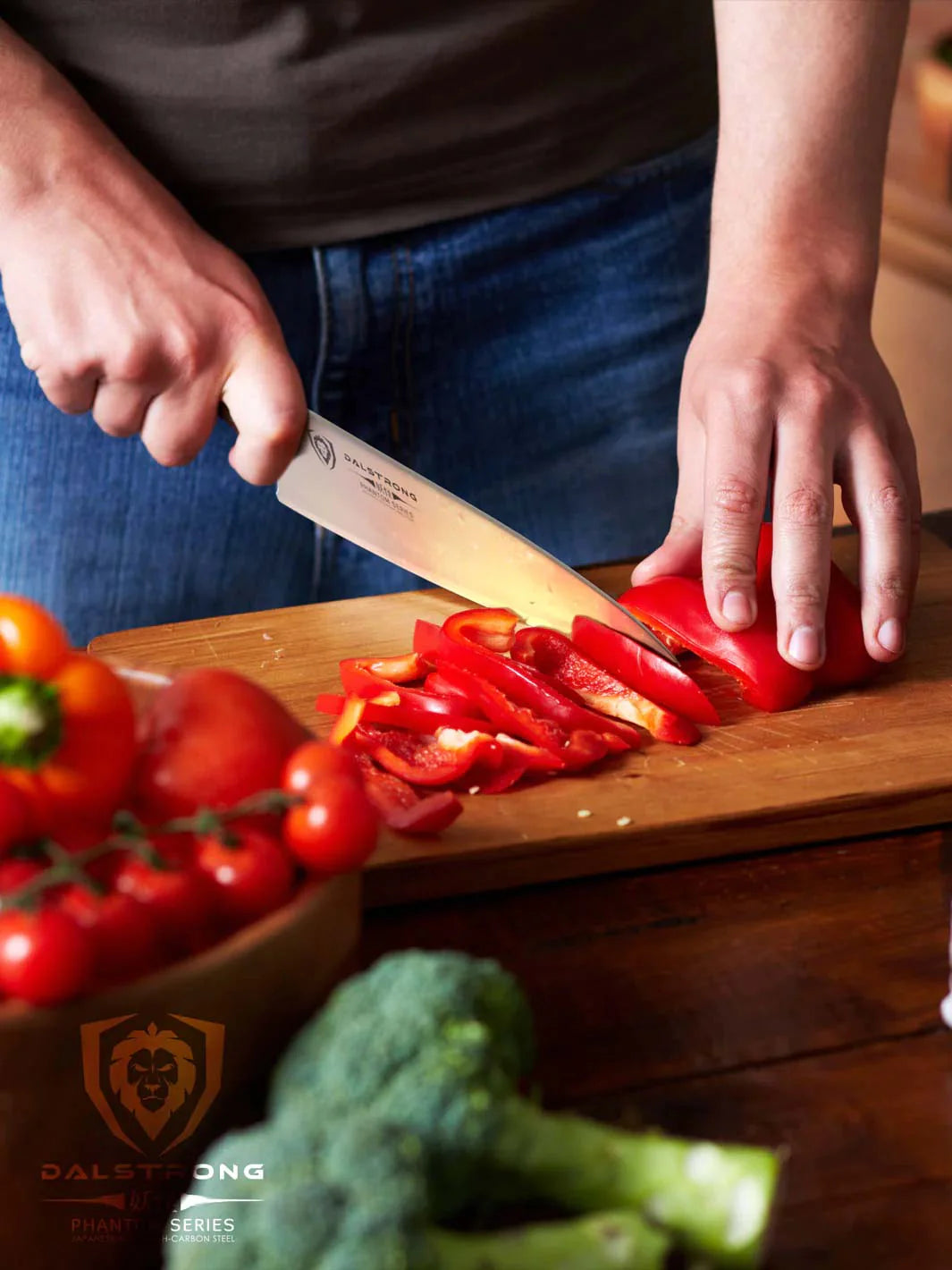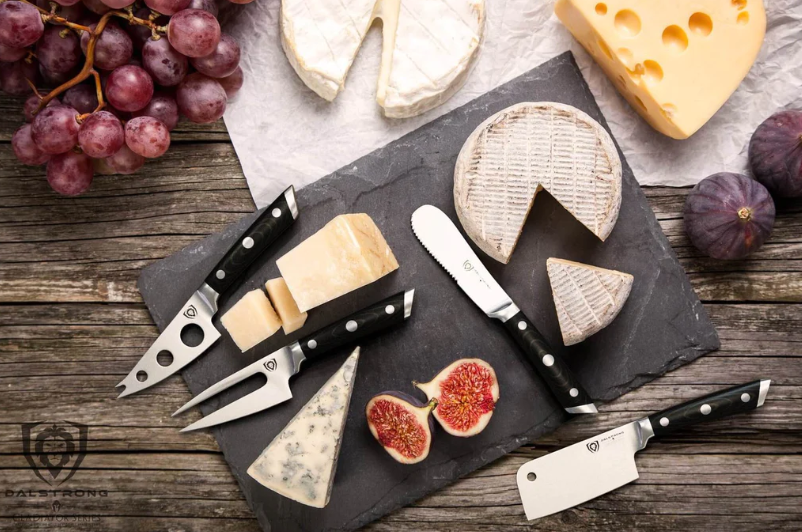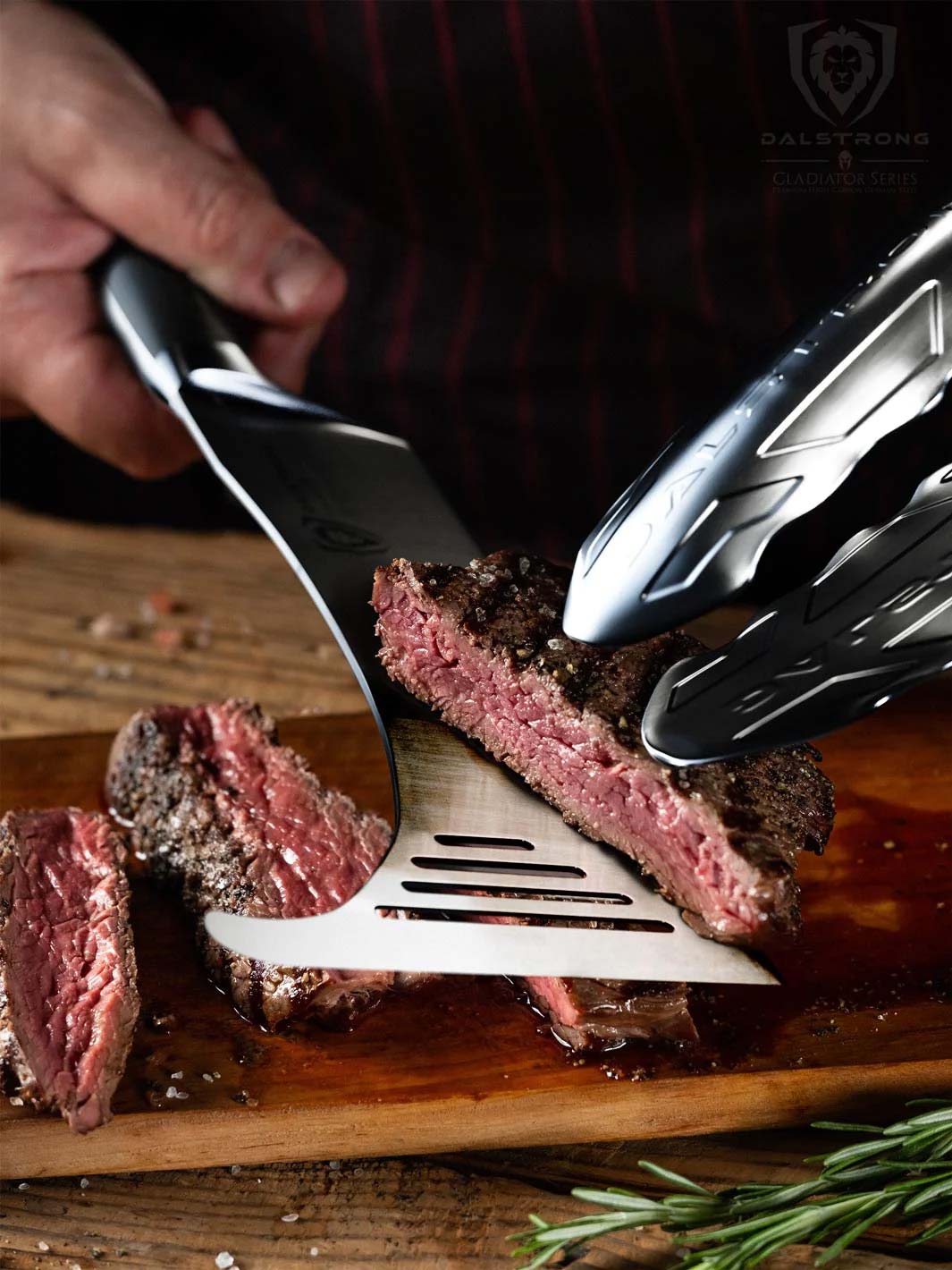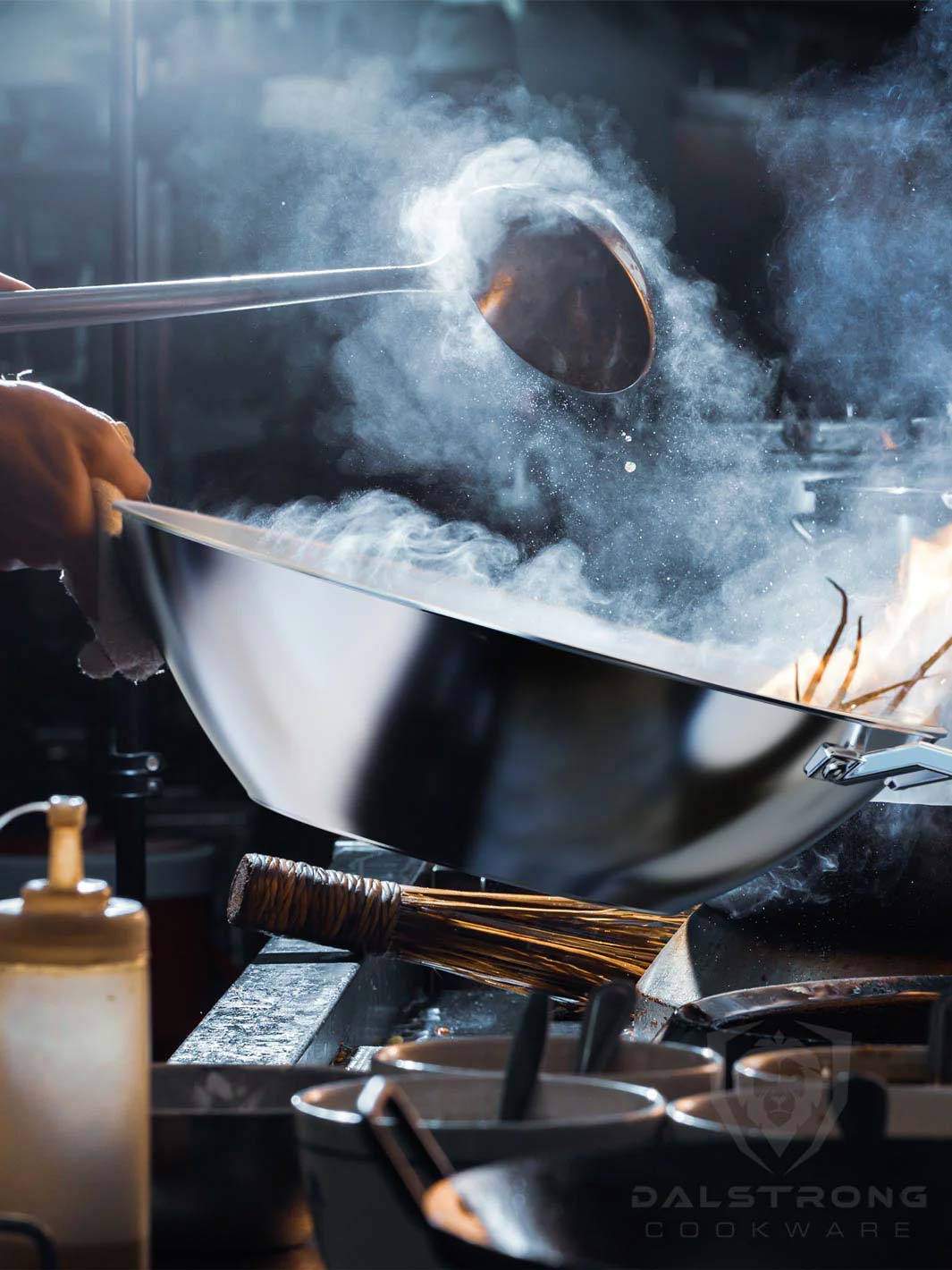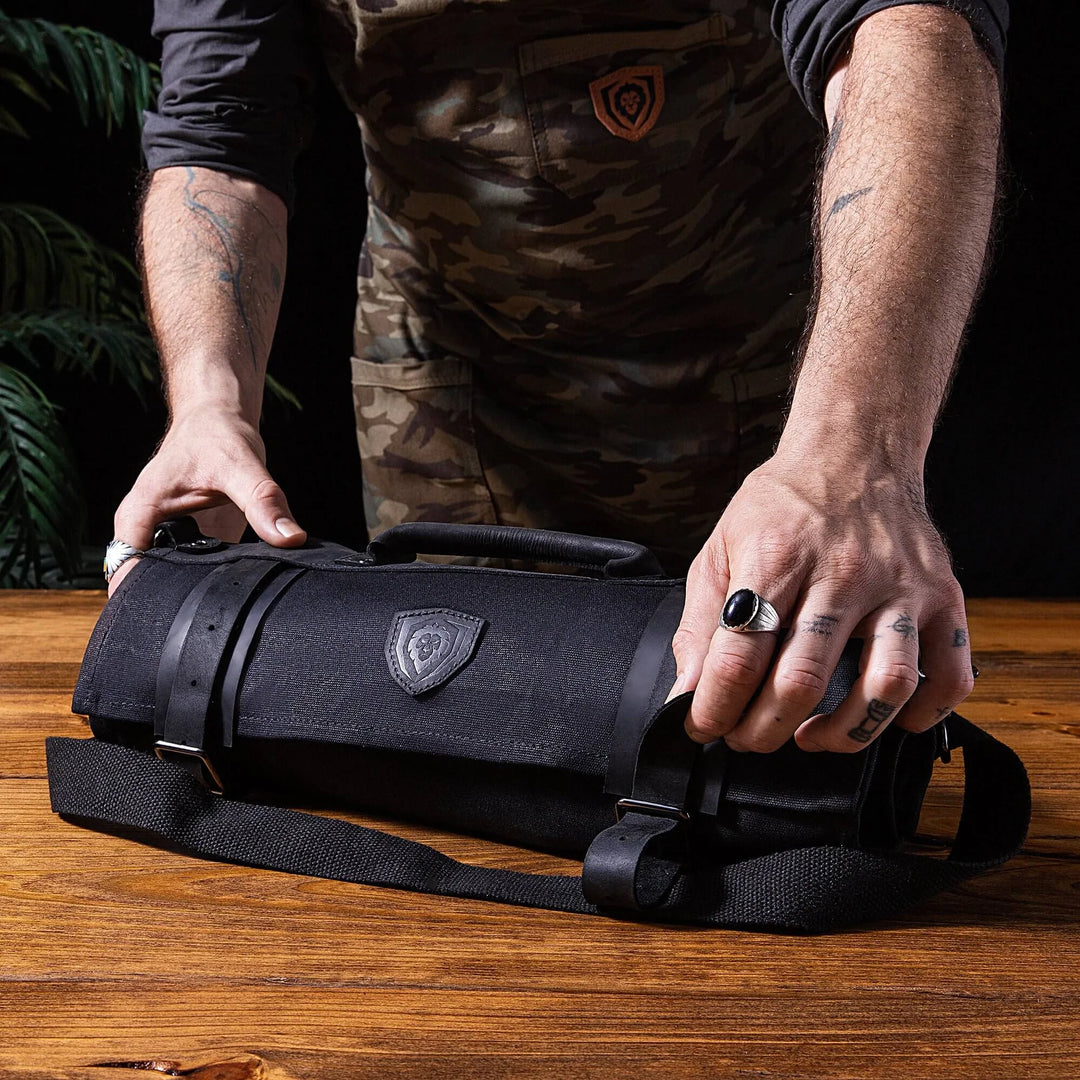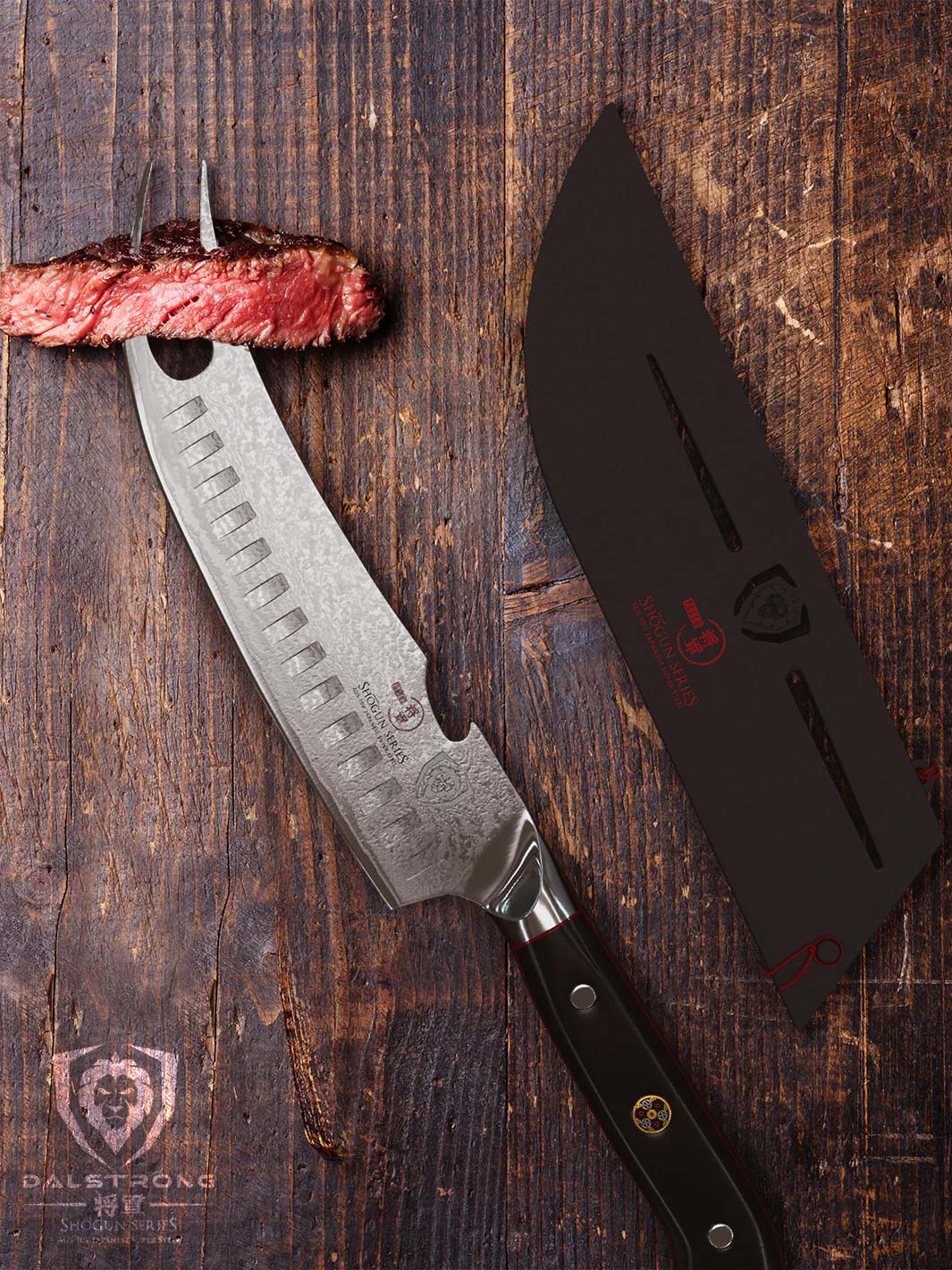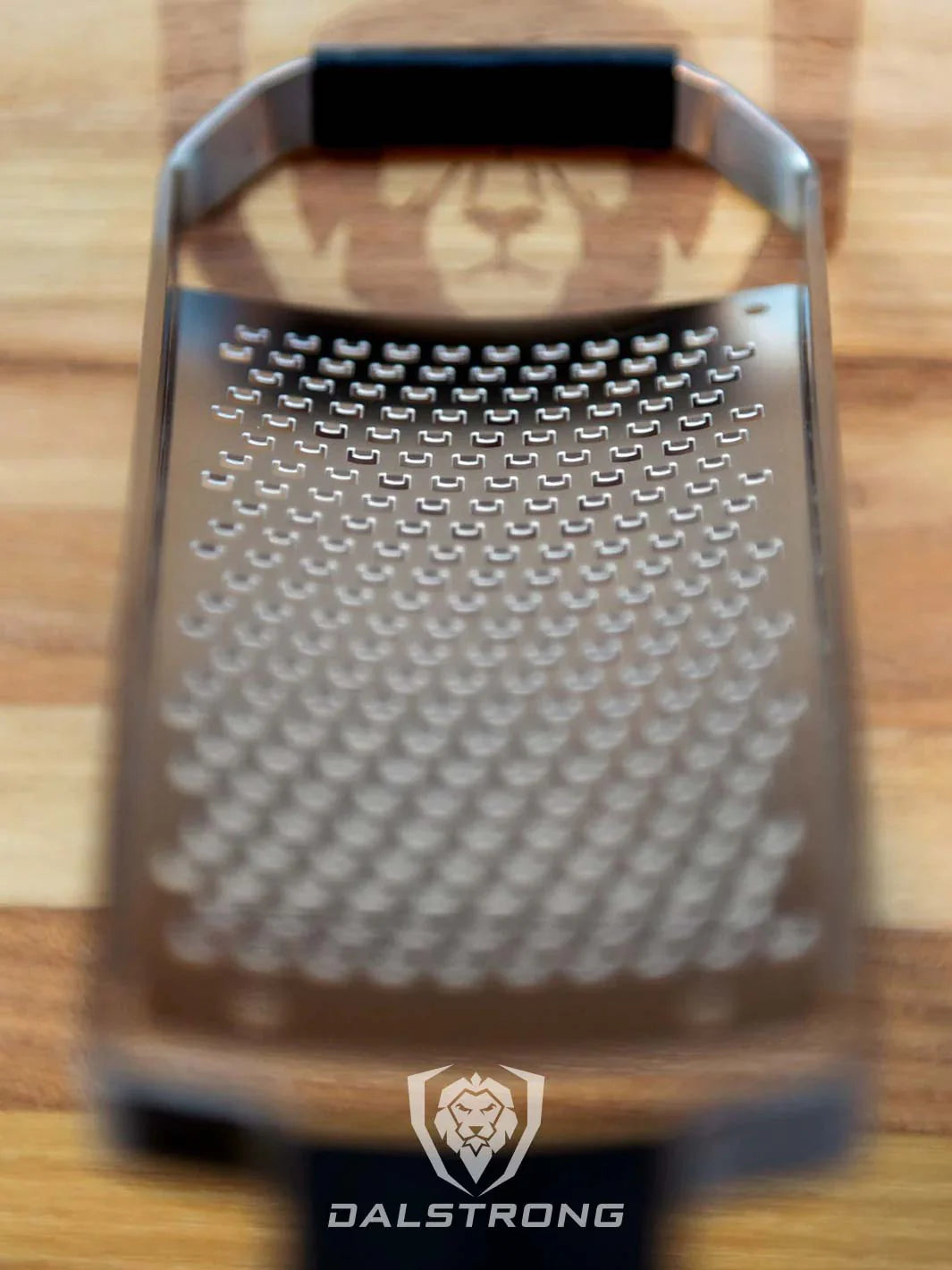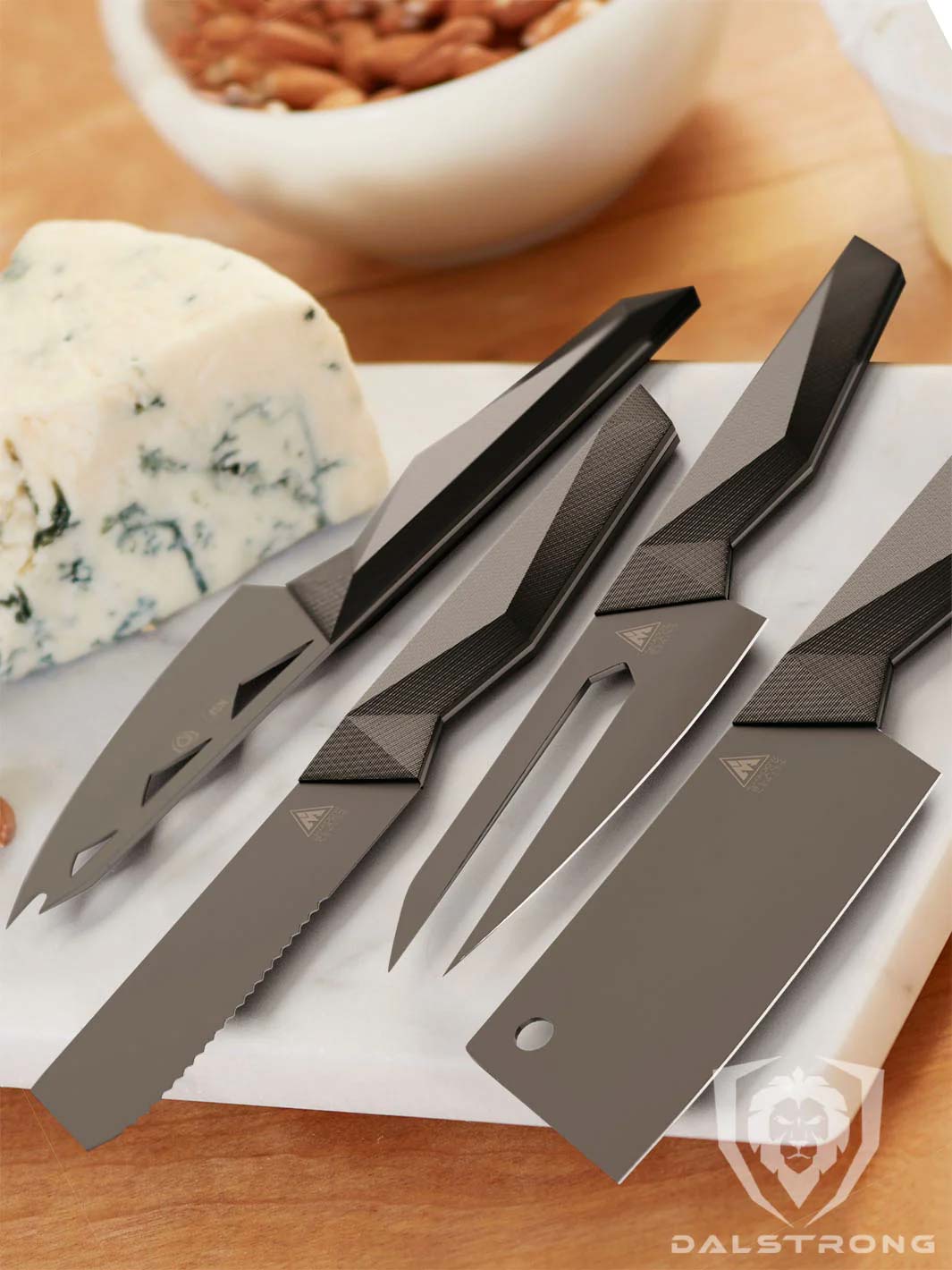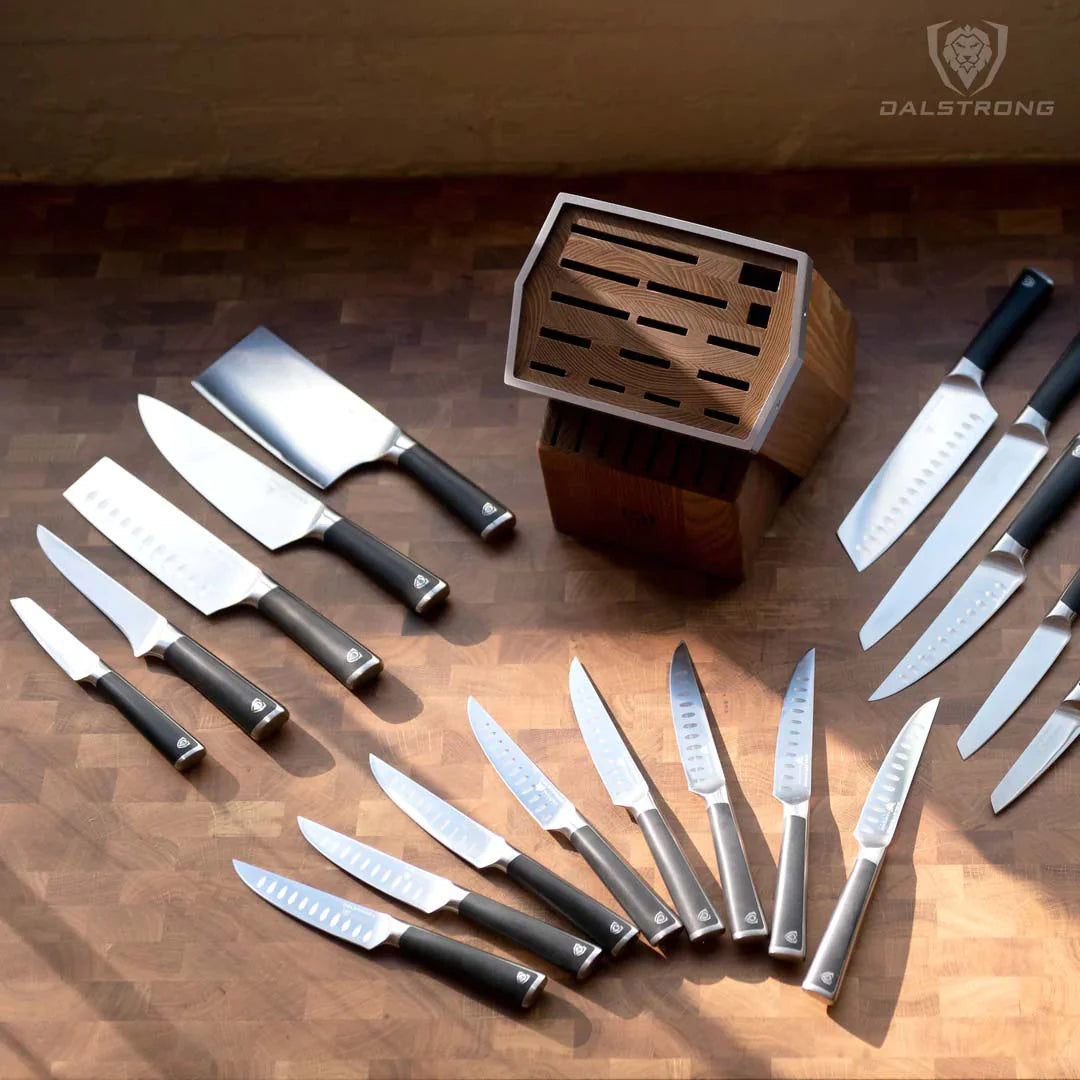Love Shellfish? You Need an Oyster Shucking Knife
 Gladiator Series Professional Shellfish & Oyster Shucking Knife 3"
Gladiator Series Professional Shellfish & Oyster Shucking Knife 3"
Oysters can add a touch of sophistication to any meal. However, cracking open the hard shell to reveal the succulent treasure inside can be tricky without the right tool: an oyster shucking knife. Let's talk about this crucial kitchen utensil, which turns the task of savoring your favorite shellfish into a smooth, seamless experience.
1. What Is An Oyster Shucking Knife?
Gladiator Series Boston Oyster Shucking Knife 3"
The oyster shucking knife, also known as "oyster knife" or "oyster opener," is a highly specialized kitchen tool made for opening oysters and dislodging their delicious meat from the confines of the shell. At first glance, it might seem like an oddity in the realm of regular chefs' knives and steak knives that make up the majority of knife sets. But once you understand its function and value, you'll quickly realize its importance.
The Blade
The most striking aspect of an oyster shucking knife is its stout, sturdy stainless steel blade. Unlike the long, sleek blades of typical kitchen knives, the blade of an oyster shucking knife is short and thick. This design is deliberate - the blade has to be robust enough to withstand the considerable pressure applied during the shucking process. Plus, it just looks really cool.
But it's not just about brute force. Safety is paramount when dealing with sharp tools and slippery oysters. This is where the dulled tip of the oyster shucking knife comes into play. It’s blunt enough to minimize the risk of accidental stabs or cuts but still sturdy enough to prise open stubborn oyster shells.
The Handle
The handle of the oyster shucking knife is another critical component of its design. It needs to offer a firm, non-slip grip that allows you to apply force safely and effectively. Some of these handles come fashioned from polypropylene, providing a sturdy grip.
Others might feature a classic wooden handle or a walnut wood handle for an elegant look. Some might even have a plastic handle for those preferring a lighter option. Regardless of the material, the handle is designed to resist slippage, even when grappling with the tricky hard shell of an oyster or when dealing with the slippery juices that are an inherent part of shucking.
The main aim of oyster knives is to simplify the process of shucking and allow shellfish enthusiasts to enjoy their favorite delicacies with ease and elegance. But beyond its primary function, an oyster shucking knife can prove to be versatile in handling other shellfish like clams or scallops. The sturdy design and effective grip make it perfect for handling these similarly hard-shelled seafood.
2. Different Types Of Oysters
 Professional Shellfish & Oyster Shucking Knife 3" Gladiator Series NSF Certified Dalstrong
Professional Shellfish & Oyster Shucking Knife 3" Gladiator Series NSF Certified Dalstrong
The ocean is bountiful and diverse, providing a rich variety of oysters, each bearing unique characteristics, taste profiles, and shell structures. This fascinating diversity results in a wide range of gastronomic experiences, making the world of oysters an intriguing one to explore.
Pacific oysters
On one hand, we have Pacific oysters, prized for their sweet, creamy flavor and plump, juicy texture. These hardy oysters are often larger, with a more fluted, pointed shell, which may necessitate a robust, sharp-edged oyster shucking knife like a Galveston style oyster knife.
On the other hand, Atlantic oysters, popular in the Eastern United States and Europe, tend to have a brinier, more robust flavor. These oysters, with their smoother, rounder shells, might be easier to shuck with a shorter, stout Boston pattern oyster knife.
Kumamoto and Olympia Oysters
Then we have the smaller, more delicate Kumamoto and Olympia oysters. The Kumamoto, a favorite among many oyster enthusiasts, is celebrated for its sweet, fruity flavor and deep-cupped shell. Its smaller size might call for a more nimble, precision-oriented oyster knife like the UJ Ramelson.
Olympia oysters, the only oysters native to the West Coast of the US, are even smaller and have a distinct, coppery flavor. These petite oysters might require an oyster shucking knife with a thinner, more pointed blade to navigate their compact shells.
It's important to remember that different species of oysters not only offer a range of flavors but also present varied shucking challenges due to their diverse shell shapes and structures. This calls for a range of oyster shucking knives, each designed to tackle a specific type of oyster shell.
Oyster Shucking Knife Designs
Some popular designs include the aforementioned Boston pattern, with its short, stout blade, perfect for prying open the round shells of Atlantic oysters. The Galveston style oyster knife, on the other hand, is often more elongated and sharp-edged, designed to handle the pointed, rugged shells of Pacific oysters.
Another popular design is the UJ Ramelson oyster knife, known for its precision and control, which makes it an excellent choice for smaller, delicate oysters like the Kumamoto and Olympia. The variants in these designs lie in their blade shape and handle design, customized to accommodate specific user preferences or to tackle particular oyster types.
3. How to Open Oysters with an Oyster Shucking Knife
Do you ever see those viral videos of rapid-fire oyster shuckers working their way through dozens of oysters in minutes? You've probably thought to yourself, "There's no way I can do that." And you're half right: it takes tremendous amounts of practice and skill to get to that point. But you can get your start by learning how to effectively (and safely) shuck oysters, one at a time.
To ensure an enjoyable and hassle-free oyster shucking experience, here are some step-by-step instructions that you can follow:
- Equip yourself with the proper tools. None of the steps below are going to mean anything if you don't have the right tool. Remember, an everyday kitchen knife won't cut it. You need a tool designed to shuck an oyster, such as an oyster shucking knife or an oyster opener, to avoid damaging the oyster and, more importantly, to keep from hurting yourself. We will delve into a few ideal choices further below.
- Prep your workstation. Before you begin, ensure that your workspace is well-prepared. Pro tip: have a large bowl filled with ice water ready. You can place your oysters in it to keep them chilled throughout the shucking process. Also, keep a clean kitchen towel folded into thirds close by; you'll use this to hold the oyster steady during shucking, and it can also provide some degree of protection against accidental knife slips. Lastly, arrange for a trash bin or a sizable bowl for shell disposal – it'll come in handy.
- Position the oyster. Lay the oyster down on the folded towel, belly side down. Position it so that the hinge, the point where the shells connect, faces right. Then, fold the towel over the oyster, leaving only the hinge exposed. Use your non-dominant hand to keep it secure.
- Put your oyster shucker to work. It's showtime. This is what it all has been leading up to. The moment of truth! Your oyster shucker's pointed end should be aligned with the oyster's hinge. Look for a point where you can get some leverage. Remember, this isn't about raw power. You're not trying to force your knife between the shells but rather, you're attempting to wiggle the knife until you find a spot where it can be inserted with slight pressure.
- The "Twist-and-Pry" technique. Nope, it's not a dance step (yet). The "Twist-and-Pry" is an effective strategy for opening oysters. Essentially, you'll want to move the oyster knife up and down while simultaneously twisting it. This technique helps find the right movement and pressure angle to open the shell from the bottom. Don't worry if you don't get it right away – feel free to reposition the tip until you get the hang of it. Once you find the right spot, the oyster will give way. And once you've done it a few times, it'll come very naturally.
- Detach the shells. After the shell has been pried open partially, use the broad, flat side of your knife to further separate the shells.
- Cut the connective muscle. Almost done. Now it's time to cut the muscle that binds the top and bottom shells together. Starting from the hinge end, slide the blade across, keeping it as flat as possible against the top shell. You'll encounter the muscle approximately two-thirds of the way through. Severing this will let you remove the top shell neatly.
- Remove the top shell and detach the muscle from the bottom shell. Finally, you can remove the top shell and sever the muscle attached to the bottom shell. This will free the oyster completely from its shell, and you can discard the shell. Be careful not to spill the oyster liquor.
4. Recommended Dalstrong Oyster Shucking Knives
1. Professional Shellfish & Oyster Shucking Knife 3" Gladiator SeriesIf you need to shuck oysters, this is your go-to. Shucking oysters requires a reliable tool, and this rugged 3" oyster knife from their Gladiator Series absolutely delivers. This full-tang tool is specifically crafted to easily pry open and shuck oysters, making the task safe and efficient. With its high-carbon German X50CrMoV15 steel blade and the long, triple-riveted handle made from G10 Garolite, this knife ensures that the delicate oyster flesh is preserved while you work.
PROS:
- Featuring a high-carbon German ThyssenKrupp Steel blade, this knife offers awesome sharpness, wear resistance, and a robust edge suitable for prying open tough shellfish shells.
- The blade is skillfully hand sharpened to 16-18° per side, striking a balance between sharpness and resilience. It'll make oyster shucking that much easier.
- When shucking oysters, you need a good grip. And this knife's ergonomic handle, made from premium quality laminated G10 Garolite, guarantees superior strength, refinement, and beauty.
-
Very easy to handle and suitable for busy professional kitchens. A fantastic gift for the shellfish aficionado in your life.
CONS:
- Careful! Oyster knife blades are sharp and have a pointed tip, so you need to exercise caution when handling and storing it to prevent injuries.
- Though this knife excels at shucking oysters, for other culinary tasks, Dalstrong's extensive selection of kitchen knives offers more specialized options.
2. Professional Oyster & Clam Shucking Knife 3.5" Shogun Series ELITE Dalstrong
Let's level things up. Dalstrong's Shogun Series Elite 3.5” oyster knife is such a tool. This full-tang tool is designed to manage even the most stubborn of shellfish with its robust high-carbon Japanese AUS-10V super steel blade. The blade's pointed tip slides seamlessly into the tightest of shells while its long, triple-riveted G10 Garolite handle ensures leverage and protects your hands. This knife not only excels in performance but also in looks with its visually striking hand-polished 'Dalstrong Tsunami Rose' pattern.
PROS:
- The blade is forged from AUS-10V Japanese super steel, ensuring scalpel-like sharpness and impressive edge retention.
- With an acute angle of 8-12° per side, this knife provides unparalleled precision in shucking tasks.
- Its handle, made from military-grade G10 Garolite, offers exceptional strength and resistance to heat, cold, and moisture.
-
The hand-polished Dalstrong Tsunami Rose pattern custom engraving on the blade adds a visually striking appeal to the knife.
CONS:
- For those starting out, the Gladiator Series 3" knife might be a more accessible alternative.
- While the handle is designed to be non-slip, it may take time for some users to adapt to its thickness and grip, which could affect the ease of use.
3. Gladiator Series Boston Oyster Shucking Knife 3"
The Gladiator Series Boston Oyster Shucking Knife features a sturdy 3-inch stainless steel blade designed for efficient oyster shucking. Its ergonomic handle provides a comfortable grip, making it suitable for both novice and experienced users.
PROS:
- Durable stainless steel resists rust and wear.
- Ergonomic handle enhances control and reduces fatigue.
- Suitable for various shellfish, enhancing its usability.
- Simple design makes maintenance a breeze.
CONS:
- Effective shucking may require some practice.
5. Frequently Asked Questions
What kind of knife can I use to shuck oysters?
The best tool for shucking oysters is an oyster shucking knife. It's purpose-built with a sturdy blade to handle the rigidity of an oyster shell, which common knives may struggle with.
Do you need a special knife to shuck oysters?
Yes, a specialized oyster shucking knife is highly recommended. It's specifically designed to open oysters safely and efficiently.
What is the function and uses of an oyster knife?
An oyster knife is used to pry open oyster shells and remove the meat. It's built to handle the toughness of the shell and to fit into the oyster hinge, facilitating a smooth and safe shucking process.
What is a shucking knife?
A shucking knife is a tool designed for opening shellfish, specifically oysters, clams, and scallops. It's made to be sturdy and safe, preventing any slipping and causing injury during the shucking process.


















































































